




Includes:
- Updated GIB® Bracing System specifications, GIB Weatherline® options.
- Updated installation guidance, including timber scotia and square stopping.
- Access to GIB® installation videos.
Available Now:
- Download on the GIB® App or gib.co.nz
- Request a hardcopy at gib.co.nz

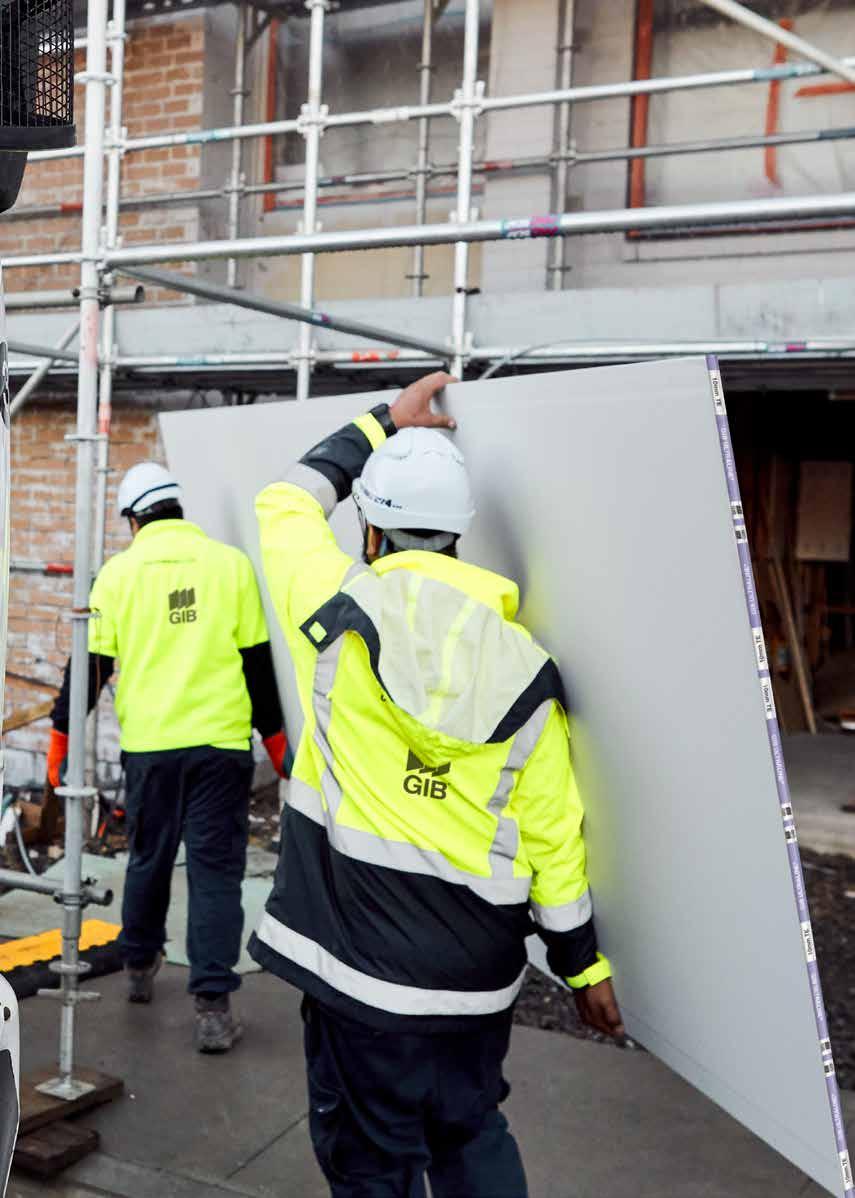
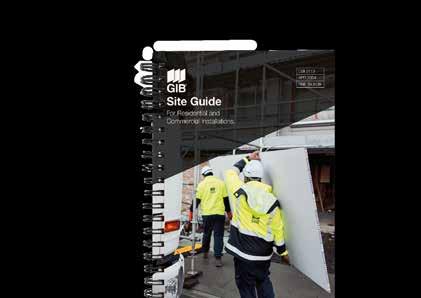




Published bi-monthly in print and online, InHouse is the official magazine for New Zealand Certified Builders Association (NZCB). InHouse aims to educate and inform our members and their staff of the latest news from the Association and the Building and Construction Industry.
New Zealand Certified Builders
PO Box 13405, Tauranga Central, Tauranga 3141
10 Marsh Street, Tauranga 3110 07 927 7720
0800 237 843
www.nzcb.nz
Editor
Linda Moody 07 557 9214
linda@nzcb.nz
NZCB Partnerships and Services
Nicola Airey
027 499 3996 nicola@nzcb.nz
Advertising and Content
Linda Moody 07 557 9214
linda@nzcb.nz
Designers
Wave Agency
www.waveagency.co.nz
Print and Distribution
Kale Print Limited
www.kaleprint.co.nz
Mailing List
Hello and welcome to the August/September issue of the New Zealand Certified Builders (NZCB) InHouse magazine. I hope this issue finds you all safe and well with not too many winter bugs bothering your business and family!
With our two major events for the year behind us, it’s still very busy for the team at the NZCB National Support Office (NSO).
It is rewarding for the team at NSO to take a brief moment to celebrate the success of another outstanding NZCB AGM, Conference & Expo. You will find highlights on pages 38 to 41. While the build up to the event is an exhausting couple of days for NSO staff, it is a privilege to be a part of organising and to attend. For those of us who only see our members once a year, it provides a fantastic opportunity to meet, work, and interact with the many NZCB members and partners we communicate with on a daily basis; you can’t beat a face-to-face conversation.
Already looking ahead, our Education and Events Manager, Marcia Hintz, has digested the valuable feedback provided by attendees and started planning the NZCB AGM, Conference & Expo for 2025. Next year’s event will be held in Hamilton at the spacious, well equipped and accommodating Claudelands Events Centre. More information to come in the next issue of InHouse.
A massive congratulations to the 20 apprentices who took part in the NZCB Apprentice Challenge Sponsored by ITM Final, our second major event of the year. You are amazing! The hard work and effort you put in should be acknowledged and celebrated. A recap of the event, including the overall winners, can be found on pages 46 to 50.
Thanks to the generosity of a collection of our talented partners and associates, we are fortunate to have articles in this issue from experts in their field. You will hear from trades and business coaches, construction law, employment law, insurance, accounting and technology experts, as well as leaders in Health & Safety, mental health, and wellbeing. Remember; one hour of learning equals one LBP Elective Point.
To keep you up to speed, we have updates from NZCB NSO, Halo Guarantees Limited, another awesome deal exclusive to the NZCB Apprentice Network as well as events, products and services from our Partners. We celebrate and recognise a couple of exceptional individuals and we also bid farewell to a couple of our team – Brad Mitchell and Shane Ririnui – who have moved on to exciting new opportunities but will be missed.
I hope you enjoy reading this issue as much as we enjoyed putting it together for you.
Until next time, take care and stay safe.

Linda Moody NZCB InHouse Editor
If you have received a copy of InHouse and wish to opt out, you would prefer to receive it via email, or would like to update your details please email linda@nzcb.nz. InHouse magazine, including the wrap, is 100% recyclable. InHouse is printed on PEFC-certified paper, supporting the growth of responsible forest management worldwide. The press used to print InHouse utilises a UV light drying system (LED), meaning there is no solvent to evaporate, and no environmental pollutants are formed. It also uses less power than traditional print technology, which helps reduce overall CO 2 emissions.
Online ISSN 2703-2418 Find NZCB on
Print ISSN 2463-3305
The contents of InHouse may not be reproduced in any form, either in whole or in part, without written permission of the Editor. All material received will be assumed to be intended for publication unless clearly labelled ‘Not for Publication’ and will be published at the discretion of the Editor. Views expressed in articles in InHouse are not necessarily those of New Zealand Certified Builders Association. While every effort has been made to ensure the accuracy of the information included in this publication, the designers, publishers, and Editor take no responsibility for errors, omissions or for any consequences of reliance on this information. Articles are not intended to be relied upon as legal advice.

By the time this edition of InHouse is published, the 2024 New Zealand Certified Builders (NZCB) AGM, Conference & Expo will have been completed.
It was a fantastic event and one that I hope our members enjoyed. It’s usually a major undertaking for the NZCB team so we decided to outsource the event management this year, which not only freed up our people’s time to concentrate on their core business, but also helped return the conference to profitability.
One of the highlights was the awarding of a Life Member Award (a category exclusive to existing members) to Mike Craig, and an Honorary Member Award (a category not restricted to a member) to Geoff Hardy.
We really wanted to make these awards a focus for the conference, and so we interviewed the recipients with the videos played at the gala dinner. Having been involved in the filming sessions, I experienced firsthand how deep these two recipients’ connections to NZCB ran, and how much these awards meant to them. Congratulations to Mike and Geoff, and thanks to both of them for everything they have done for NZCB and the broader construction industry over the years.
Another highlight for me was the keynote address from Sir Ian Taylor, who was asked to speak after a presentation I saw him give at the Construction Sector Accord and Waihanga Ara Rau Summit in 2023.
One of Sir Ian’s key messages at that event (which he was asked to repeat at our conference) was that successful organisations (including countries) are those with education-led strategies.
Congratulations to Mike and Geoff, and thanks to both of them for everything they have done for NZCB and the broader construction industry over the years.
We have taken that view to heart at NZCB, with the recently developed Education & Events team within National Support Office (NSO) now numbering two education professionals. One of the first tasks for the Education & Events team will be to reimagine our annual conference, and develop a model that will appeal to the conference regulars while being more attractive to a wider group of members.
Beyond that, though, the team has been looking closely at the education and event offerings we hold across the country and has two strategies that it is implementing, both of which have regional delivery as a focus.
• Education
Under the new NZCB Learn brand, there are three workshop series that we have been working on since late 2023, now with new names for marketing purposes:
• Business Basics (the previous working title was Business 101)
• Pathways (the previous working title was Carpentry Roles)
• Coaching the Crew (the previous working title was Train the Trainer)
The intention here is to deliver these training sessions via blended in-person/online modules, and to keep classes small (as low as six attendees) to enable these workshops to be held within the regions.
• Events
Continuing with the regional focus, the Education & Events team has been working with several NZCB Committees and Regional Coordinators to see how we can help regional committees bring great events to life with the support of the NSO. The NSO team has created online event request and management forms that make it very easy for the Regions to plug NSO resources into their events.
These proposals acknowledge the central role that regional committees play in helping NZCB support our members around the country.
We want to do more to help regions put on events that matter to their communities, and to enable our NZCB champions like Mike Craig and Geoff Hardy help out their colleagues. Seeing the results of changes implemented at this year’s NZCB Conference provided a great chance to see some of this hard work start paying off.
Malcolm Fleming NZCB Chief Executive


One of the many roles that New Zealand Certified Builders (NZCB) undertakes for its members is advocating on their behalf to government, local councils, and various industry bodies.
The NZCB Board, NZCB Members, and NZCB Executive Leadership Team members sit on several national boards and industry groups, and they have represented members’ interests in a number of ways in recent months.
The group met in mid-April to discuss various initiatives that can help New Zealand’s small businesses in the current economic climate.
The main focus for this workshop was on how to make the various resources and data the public service holds more readily available to small businesses. There was also discussion about other initiatives including making financing more available, cutting red tape, increasing foreign investment and so on,
New Zealand Construction Industry Council (NZCIC)
No full NZCIC Council meeting has been held since the April meeting that was reported on in the last edition of InHouse.
NZCB representative: Chief Executive and NZCIC Chairperson, Malcolm Fleming
NZCB continues to be represented on the BRANZ Building Research Advisory Council with NZCB Board Member Director, Garry Nott. There are no updates to report at this stage.
NZCB representative: NZCB Board Member Director, Garry Nott
Technical Advisory Group – Core/Fundamental Construction Skill Standards
The Technical Advisory Group (TAG) hosted by Waihanga Ara Rau seeks feedback from industry to define and shape what common Construction Core Standards exist, regardless of trade groupings. The TAG met in Wellington on 4 June and provided feedback to Waihanga Ara Rau on transferable fundamental construction skills. The next meeting is scheduled for mid-July.
NZCB representative: Industry Pathways and Apprenticeship Manager, Nick Matthews
NZCB Education and Events Manager, Marcia Hintz, holds the role of Chairperson of ConCOVE’s Women’s Advisory Group.
The Women’s Advisory Group supports ConCOVE to develop strategies that enable a supported learning and working
although a lot of these areas are already being considered under other projects such as tax reform and banking inquiries.
The Ministry of Business, Innovation and Employment (MBIE) will be doing more work going through what information government departments hold that might be useful for small businesses, and will report back to the group in the coming months.
NZCB representative: NZCB Chairperson, Nick Farrelly
No BAP meeting has been held since the April meeting that was reported on in the last edition of InHouse. The next meeting is July 2024.
NZCB representative: Chief Executive, Malcolm Fleming
NZS 3604 (Timber-framed buildings)
Development Committee
NZCB continues to be represented on the NZS 3604 review with NZCB Board Member Director, Ian Chamberlain. There are no updates to report at this stage.
NZCB representative: NZCB Board Member Director, Ian Chamberlain
Waihanga Ara Rau’s Onsite Construction Strategic Reference Group (SRG)
The SRG met online in July to discuss Cabinet’s proposal regarding Vocational Education, Enhancing Employer Training, and to identify focus areas and priorities for the SRG. The next meeting is scheduled for 15 October.
NZCB representative: Industry Pathways and Apprenticeship Manager and SRG Chairperson, Nick Matthews
environment for women in construction.
Since the last update, four project submissions have been reviewed and feedback reported.
NZCB representatives: Education and Events Manager, Marcia Hintz.
Ara Rau Working Group
NZCB has two representatives on the Waihanga Ara Rau working group tasked with developing new Construction Fundamentals and Carpentry Skills Standards, and reviewing the Level 4 Carpentry qualification.
The project is progressing well and is set to benefit all learners and employers alike. It is encouraging to see new ways of thinking about assessment emerging. More information on this meeting can be found at www.waihangaararau.nz/core-construction/.
NZCB representatives: Education and Events Manager, Marcia Hintz and Industry Pathways and Apprenticeship Manager, Nick Matthews
Carpentry
NZCB continues to be represented on the BCITO’s Carpentry National Advisory Group with NZCB Industry Pathways and Apprenticeship Manager, Nick Matthews. There are no updates to report at this stage.
NZCB representative: Industry Pathways and Apprenticeship Manager, Nick Matthews






The public comment period for the updated standards was extended and has now closed. The committee has received the comments for review before their online meeting later this month. Once this process is complete, we will request proposed dates for milestones to completion.
NZCB representative: NZCB Member Alan Drayton, BioBuild
MBIE called for submissions on a review they are conducting of the process for approving international building product standards.
NZCB Chief Executive Malcolm Fleming convened a group of NZCB members to work on a submission, which emphasised the need to ensure that any building product standards that were adopted in New Zealand needed to meet or exceed an equivalent New Zealand standard. In addition, the submission stated that any international products themselves needed to be tested with New Zealand’s unique climate and earthquake risks in mind.
NZCB convenor: Chief Executive, Malcolm Fleming























New Zealand Certified Builders (NZCB) is committed to elevating professional standards in the building industry and ensuring the success of its members.
To help with this, we’re set to roll out the NZCB Education Plan for 2024. This strategic initiative aims to equip builders with essential business acumen, enhance workplace training quality, and foster leadership and continuous learning in the carpentry field.
This plan is shaping the way we think about the events and training opportunities we offer in future. We’ll be advertising those in the usual way so make sure you keep an eye out for them and sign up!
In the meantime, we wanted to explain the plan and what you can expect to see when you undertake NZCB training.
At the heart of the 2024 Education Plan is a clear objective: to enhance NZCB’s reputation as the preferred association for professional builders in New Zealand. There’s a clear demand for training not only in the technical skills required to be a builder but in the skills required to manage a building business. Our Plan offers a structured professional pathway to address these needs, setting our members up for long-term success and sustainability in their businesses.
There are three core programmes outlined below, which will be available along with a growing library of useful Health and Safety templates, Standard Operating Procedures, Toolbox talks and other relevant micro-learning.
We are also in the process of developing online modules for our members, and we’ll be sharing more information about these in the coming months.
One of the cornerstone initiatives of the plan is the Business Basics training programme. This programme has been designed for those either very new to business or considering going out on their own. The programme covers:
• Finance Management: Basics – rates, cash flow, cost tracking, tax.
• Marketing Strategies: What is marketing and how to create a marketing plan that works for you.
• People Management: Focusing on interpersonal skills, team leadership, and fostering a positive company culture. By enhancing these core business skills, NZCB aims to improve overall business outcomes for our members.
2. Coach the Crew: Becoming an effective workplace trainer
Recognising the critical role of effective workplace training, NZCB is launching Coach the Crew (formally Train the Trainer). This initiative is designed to enhance the quality of workplace training and improve learner outcomes. Key components of the programme include:
• Understanding Adult Learners: Offering insights into different generational learning styles and relationship-building.
• Universal Design for Learning: Providing strategies to cater to diverse learning needs and removing barriers.
• Assessment Practices: Delivering practical methods for assessing and verifying workplace skills.
• Positive Learning Culture: Promoting a supportive environment, growth opportunities, and constructive feedback.
This programme ensures that trainers are well-equipped to deliver high-quality instruction, fostering a positive and productive learning environment.
3. Pathways: A pathway to leadership
To inspire continuous learning and leadership within the industry, NZCB is introducing the Pathways Programme. This initiative provides a clear career pathway, guiding members from entry-level positions to supervision roles. The programme focuses on:
• Leading Hand: Developing time management, communication, and problem-solving skills.
• Site Foreperson: Enhancing leadership, project management, and effective communication capabilities.
• Site Supervisor: Emphasising on-site management, problem-solving, and ensuring project.
Learners will gain essential skills in project planning, leadership, health and safety, and interpersonal communication, positioning them to manage building projects efficiently and lead teams effectively.
To ensure the relevance and effectiveness of the education initiatives, NZCB has established an Education Advisory Group, whose feedback will be crucial to the success of the Education initiative.
Surveys, interviews and regular contact by the Education manager will also ensure members’ voices are present in all decision-making. A recent survey collected valuable information from our members, where 98% of those surveyed placed learning as a priority. A full report on the survey will be published soon.
Additionally, NZCB will collaborate with industry partners, engage external moderators, and utilise flexible delivery methods to reach a broader audience.
NZCB members have a range of learning preferences and needs, which is why NZCB will offer a range of delivery options for its training programmes:
• In-Person: Face-to-face sessions with hands-on interactive and engaging content.
• Blended Learning: A mix of online core content and in-person practical sessions.
• Fully Online: Interactive modules and library on microlearning covering a range of content.
This approach ensures that all members will have access to engaging and effective learning experiences, regardless of their location or schedule.
The NZCB Education Plan for 2024 is a visionary initiative set to provide training by members for members. The programmes will grow and retain currency via a cycle of design and review to ensure continuous improvement. This plan not only strengthens the association’s standing but also contributes to a more resilient and thriving construction industry.
With a commitment to quality, flexibility, and continuous improvement, NZCB is paving the way for a new generation of professional builders who are equipped to lead, innovate, and excel in their careers.
Marcia Hintz
NZCB Education and Events Manager
Join us in Auckland, Tauranga, Gisborne, and Napier this September for the NZCB “Coach the Crew” programme.
This essential training is designed to enhance workplace training quality and improve learner outcomes. Key components include:
• Understanding Adult Learners: Gain insights into different generational learning styles and effective relationshipbuilding techniques.
• Universal Design for Learning: Learn strategies to cater to diverse learning needs and remove barriers to education.
• Assessment Practices: Discover practical methods for assessing and verifying workplace skills.
• Positive Learning Culture: Promote a supportive environment with growth opportunities and constructive feedback.
• Equip yourself to deliver high-quality instruction and foster a positive and productive learning environment.
The sessions run 8am-4pm and will be held on the following dates:




Marcia Hintz

Marcia has more than thirty years working on educational initiatives involving learners of all ages, with a particular focus in recent years on vocational training across a range of industries. She specialises in the design and delivery of Adult Education, Leadership, Health and Safety and Professional Development, with experience in the NZQA Framework as well as workplace training, assessing and verification.

Sessions are worth 6 LBP points
It’s been a busy few months at New Zealand Certified Builders (NZCB) with staffing changes, as we say farewell to Shane Ririnui and Brad Mitchell, and Nick Matthews moves into a new role.
On behalf of the entire NZCB family, thank you to Shane and Brad for all your work for the Association. You will be missed by your colleagues and our members alike, but we wish you all the best for what’s to come.
Shane Ririnui
The National Support Office (NSO) team farewelled Membership & Technical Manager Shane Ririnui in June, as he drew his nineyear tenure with NZCB to a close. Shane started with NZCB as a Business Development Manager in 2015 and stepped up to the Membership & Technical Manager role in May 2021.

Over his nine years with NZCB, Shane built up a deep knowledge of the Association, its membership, and its systems. His trade certificate in tiling combined with an education degree provided him with an impressive qualification base, while his unflappable demeanour and soothing voice proved to be assets with homeowners calling with potential membership complaints.

Nick Matthews
Since 2021, Nick has served as our Industry Pathways and Apprenticeships Manager. A key component of that role was to design and establish the NZCB Apprentice Network, which recently enrolled its 200th Trainee Member and is now well established as a compelling NZCB membership benefit.
And to Nick, congratulations on your continued progression within NZCB, I am looking forward to seeing the impact you make in the membership space, which is the lifeblood of a trade association.
Brad Mitchell
Brad will be finishing up at NZCB in early August after being the Central and Lower North Island Territory Manager since October 2022. It’s a big territory to manage looking after the regions south of the Bombay Hills to Wellington. As a trade-qualified carpenter himself, Brad was embraced by the membership and quickly formed strong relationships across the NZCB network.

Brad has made the courageous decision to take an early retirement and spend time with his family on an extended caravan journey around New Zealand. I’m sure we’ve probably all had similar fantasies at some point in our working life, but it’s another thing to take the plunge and do it. I’m certainly looking forward to staying in touch with Brad and hearing about his journey. Safe travels!
We’re lucky to have Nick take over from Shane as the Membership & Technical Manager, which will be a really good fit for him, as a trade-qualified carpenter with a recently completed management degree. In this role, he supports our members in all sorts of ways from Day One of their membership of NZCB. But he also has a particular focus on how we respond to homeowner complaints about our members, ensuring we deal with complaints received in a fair, transparent way, while also protecting the integrity of the Association as a whole.
Nick will continue to be based in Christchurch, but will be travelling regularly around the country, managing the three Territory Managers and two NSO-based team members.
Malcolm Fleming NZCB Chief Executive

At New Zealand Certified Builders (NZCB), we are always looking for ways to make admin simpler for our members. To help with this, we are now accepting online credit card payments and direct debit payments designed to make your transactions more convenient and efficient.
To get started with online credit card payments look out for the “Pay Now” button on your next Xero invoice. Click on it to follow the prompts and complete your payment effortlessly.
Key benefits of our new online payment system include:
• Payment options: Choose between a one-time payment or weekly instalment (Business members only).
• Subscription service: Enable automatic credit card billing for future invoices. Direct bank account billing is not currently available in New Zealand.
• Ease of use: Simply click on Pay Now and follow the prompts and complete your payment.
• Security: These transactions are conducted through a secure payment gateway, ensuring your transactions are safe and protected.
• 24/7 accessibility: Make payments anytime, anywhere, eliminating the need to wait for traditional office hours.

To avoid bank/admin fees, please notify receivables@nzcb.nz of any changes to your membership before payments are processed. These changes include changing your company name, ending your membership, downgrading your membership, or querying an invoice.
If you switch banks, please complete, sign, and send a new Direct Debit Authorisation to receivables@nzcb.nz.
If you send this form through immediately after an invoice has been issued, please pay that invoice via direct credit to keep your membership current.
By choosing this payment method, you agree to the terms and conditions of the Association’s annual membership subscription, which includes the advertising levy for business members.
Most standard bank accounts support direct debits, but it’s a good idea to confirm this with your bank, and check whether they will charge an establishment fee.
Your NZCB subscription will be processed via DIRECT DEBIT from your designated bank account on the 20th of the month when your membership is up for renewal.
• Contact receivables@nzcb.nz for a Direct Debit Authority document.
• Fill out and sign the document.
• Return the signed document to receivables@nzcb.nz.
• Upon receipt, we will submit it to your bank for approval.
If you have any questions or need assistance, please do not hesitate to contact us at receivables@nzcb.nz. We are here to help.
Sandra Kennerley NZCB Chief Financial Officer


A fresh suite of architect designed plans for New Zealand Certified Builders (NZCB) Business members are on the way, kicked-off with a workshop between NZCB and leading architecture firm Designgroup Stapleton Elliott (DGSE).

The workshop in Wellington at the end of May saw Architects and Project Principals from DGSE sit down with NZCB Chief Executive Malcolm Fleming and NZCB members Dave Gunter, Adan Larsen, Mike Craig, Laureen Goodger, and Sacha Gray.
“The focus for the workshop was to get the ball rolling on developing designs for homes that clients can get really excited about, with the key drivers being that the designs are striking, and that buildability, sustainability, and affordability are at the forefront,” Malcolm said.
“Our existing suite of Certified Plans was developed a while ago and there’s a need to refresh this library with designs that are contemporary, affordable and make use of new technologies and design approaches that have come along over the past few years.
“Our members have been keen to see new plans developed, so it’s exciting to get that process started.”
The workshop was hosted by DGSE Principal and sustainability team lead Hannah Andrew, who said DGSE was pleased to be partnering with NZCB on the project.
“We’re really pleased to be working with NZCB on these new plans. Sustainability is central to what we do, and these plans are a great opportunity to offer clients a design that as well as being good for the environment, will look great and won’t break the bank.”
Following on from the Wellington workshop, there will be a series of online sessions between the DGSE/NZCB team to develop the first two designs. The aim is to have these plans complete and ready for all NZCB Business Members to use, free of charge, in the third quarter of 2024.
Once these initial designs have been rolled out, a further series of three plans will be developed in 2025.
The five new plans will be free for all NZCB Business members. The existing library of Certified Plans will continue to be available as an exclusive no-cost back catalogue to those members who were Certified Plans subscribers as at 31 December 2023.
It used to take weeks or even months to design and build kitchens, wardrobes, laundries and benchtops.
Well things have changed.
Cabjaks online design and pricing tools provide instant quotes plus our super fast production lead time means that you won’t grow old waiting for things to develop.

As a member of NZCB, you get a super sweet deal as well. Scan the QR Code to register, select NZ Certified Builder, or visit www.cabjaks.co.nz/account/register. We will send you an email with your exclusive discount code.

6

Recently we notified members that The Waiver of Subrogation was being replaced with a new product. From 1 July 2024, every build that qualifies for a Halo Guarantee will also qualify to purchase a Specified Residential Dwelling Indemnity Agreement
This protects you, the member, where there is an approved claim under the Guarantee after the initial two-year defect period for:
• Defects resulting from product failure/material defects (it doesn’t cover your own work).
• Defects caused by sub-trades, where all reasonable efforts have been made by you to have your subcontractor rectify the issue.
The benefits to you are:
• You are fully indemnified against any loss where there is an approved claim under the guarantee; all we ask for is some help if a sub-trade is involved.
• If there is a systemic product failure in the industry that results in multiple claims under the guarantee, you will be protected.
• You don’t have to remain a member for the provisions of the agreement to apply, since the agreement is linked to a specific build and not ongoing membership.
As a result of the new agreement coming into force, the Waiver of Subrogation will no longer be provided from 1st July 2024, although all existing Waivers in place will still be honoured as per the terms of the Waiver. For more details, please refer to the Halo section in Toolshed.
In line with a drop in building consents, we have seen a decline in volumes this year. Below is an overview that was provided at conference.

• In summary, currently Halo had 2252 applications accepted in 2023, with 3224 polices issued. As of 31st May 2024 we have 6796 policies in force.
During 2023 Halo started receiving and accepting claims under the policy. As we grow, we expect claims to increase in line with growth in policy numbers. Pleasingly, in the majority of cases where a claim was accepted, the member involved remediated the work. In general, claims we have paid have been for members that are in liquidation.
We have noted that there is some confusion over claims and who is responsible. In short, Halo is the last to respond in the event of a defect in a client’s home. Halo is there to guarantee the builders’ obligations, not to perform their obligations. Therefore, if a claim is made, our first step is to go back to the builder and request that they remediate the defect as per their obligations under the Building Act. If the builder is in liquidation, Halo will step in, assess the claim then remediate any defects as required.
We have also seen a few members increase their liability by adding items into the contract to cover items so the owner would be covered for items they have paid for separately. It’s important to remember that any item that is in your contract is your responsibility and if it fails it becomes your obligation to remediate. Therefore, we would urge you to avoid ‘doing clients a favour’ and keep any owners’ items outside of your contractual responsibility.
If you have any questions our team is here to assist you. Please feel free to reach out to us at 0800 141 490 or hello@halo.nz.
Shaun Riley Halo Guarantees Limited Chief Executive


We have all seen the headlines when the economy slows – “Boom to bust: Building sector liquidations on the rise”,1 “Construction crunch: More building firms fail”, 2 “Collapse crisis: 25% of all company failures in 2022 from construction industry.”3
Our Building Research Levy-funded study aimed to find what liquidations can tell us about the resilience of residential building companies – what are the drivers and the lessons from liquidations?
Let’s put it in context a bit
There are more construction companies than ever before. The number of construction businesses has grown consistently from 50,000 in 2012 to over 80,000 enterprises in 2023. Nearly 75% of these are companies, more than double the number in 2000 when being a sole trader was more popular.
Liquidations are only one way that a company can end (known as a ‘death’ in official statistics) – most residential construction businesses close without being liquidated. Liquidations make up less than 5% of all construction business deaths in the last decade, and while this has increased in the last year, it puts the headlines in context. It is higher than the liquidation rate for all business enterprises however, which is just over 3%.
The top three reasons for liquidation were about financial management, followed by project issues and tax obligations. Project issues tended to be about contracts, delays and disputes. Business ability and leadership issues hardly appeared for the oldest companies, and nor did external influences (i.e. they knew what they were doing and could survive economic downturns).
Like businesses in general, it is the early years where residential construction businesses are most vulnerable. Most businesses get through the first year, but liquidations quickly increase in the second and third years, and peak in the fourth year of operation.
Young businesses have the widest range of liquidation reasons. Director issues, cashflow, pricing and contractual reasons do appear more often than for older companies, but disputes, lack of sales, and tax obligations are also all in the top ten reasons given for liquidation of young companies.
Main reasons for liquidation of residential construction companies 2011-2022
Shareholders are the most likely people to put a residential construction business into liquidation, and creditors are the least likely. This might surprise you, but shows that creditors prefer other ways to get their money from a company than to put it into liquidation (really a last resort).
Creditors put younger companies (three years or less) into liquidation more than they do for older ones. The oldest companies have the highest proportion of shareholder-initiated liquidations, and the least number from creditors.
Surviving the younger years – when most residential construction liquidations occur
1 Newshub, 29 November 2022.
2 New Zealand Herald, 15 March 2023.
3 One Roof, 14 July 2022.

Companies more popular than ever –growth of companies vs sole traders
Helping residential construction companies survive the first three to four years should be the focus of support efforts. The wide range of reasons behind liquidations of younger companies tells us that support should be about making them aware of the range of risks they face, rather than narrowing it down too far. We also need to find a way to transfer what older companies know to the younger ones – the situational awareness, the ability to anticipate, prepare, and adapt to downturns.
It also tells us that while liquidations get the headlines, they are only a small part of why construction companies end.
Third Bearing Limited is an advisory firm with a 20-year track record of high-quality work alongside local, national and international clients. Our team covers research, policy development, and practical projects across a wide slice of the building and construction sector. We have undertaken a number of research projects for BRANZ


To meet the H1 insulation changes, Comfortech® have collaborated with key industry stakeholders to lead the way with a range of residential solutions that specifically address thermal bridging, delivering optimal outcomes for energy efficient homes.
Comfortech® have developed a single layer Pink® Superbatts® R7.0 solution, at a new width of 460mm, segments can be notched and fitted between the truss chord to seal the thermal bridge.
For compliance using the:
• Schedule method
Use Pink® Superbatts® R7.0
• Calculation and modelling methods May determine a lower R-value is required. Comfortech® has a range of other R-values including Pink® Superbatts® R4.5, R5.0, R6.0 which are at the new width of 460mm
The Comfortech® two layer solution uses a:

• First layer of Pink® Batts® insulation that is the combined height of the truss chord and the gap to the top of the ceiling batten. This layer would be either 110mm for a 90mm truss chord, or 160mm for a 140mm truss chord.
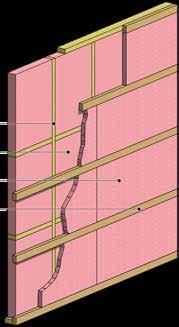
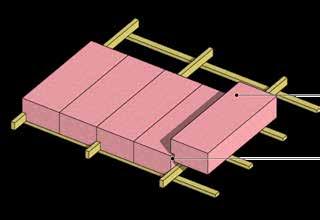

This enables the delivery of a 90mm timber frame wall, with a secondary insulation of 45mm thickness between internal battens. This solution delivers a thermal performance which exceeds that of a 140mm R4.3 Pink® Batts® by over 20%. The bracing value of the plasterboard can still be utilised.
• Second layer of over-width (460mm wide) Pink® Superbatts® insulation. When the two layers are installed, the thermal bridge is completely closed, and the insulation performs as modelled.
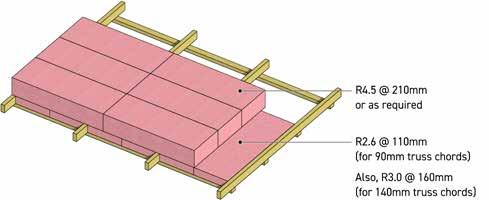
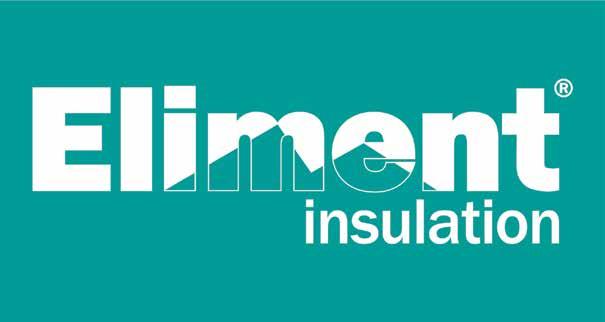

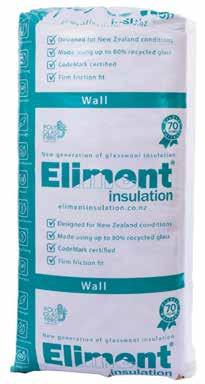
New generation of dual thermal & acoustic glasswool insulation at highly competitive rates
CodeMark certified
Designed for New Zealand conditions
Made using up to 80% recycled glass
Compressed up to 15 times at packaging to reduce transport and CO2 emissions
70 year product Warranty
Find Eliment online on Smartspec, MasterSpec & Design Navigator
Available to order nationwide from ITM, Placemakers and other selected building merchants and installers
For more information visit elimentinsulation.co.nz

If you want to reduce your environmental impact when building, Abodo’s Vulcan Cladding range is now available in two options; the original Architectural Series (now in its tenth year) and the new Standard Series.
The difference between the two options lies in the grade of timber used for each product, and this means the new Standard Series is available at a more accessible price and with a light natural character to its appearance.
This light natural character includes some knots, resin pockets and other natural features present along with some clear lengths.
Same, same – but different. Builders will notice the same light, stable, high-performance properties in the Standard Series.
• Both the Architectural and Standard series are made from the same New Zealand grown, rapidly renewable Radiata.
ASSA ABLOY is excited to release Lockwood® pull handles in the full powder coat colour range.
Now, your customers can seamlessly colour match their pull handle to their door for a discreet
subtle aesthetic, or fully express themselves with a bold colour to make a statement first impression.
To find out more, visit www.assaabloy.com/nz
We’re your go-to copywriters and SEO experts, crafting web content that reflects your business and engages your audience. As early adopters of AI, we are blending this technology with our expertise to offer you high-quality content for less.
With over 20 years of experience, we write for businesses big and small across New Zealand (and beyond!). For 10+ years, we’ve written for the construction industry, including New Zealand Certified Builders. Website need a makeover? Want to rank better on Google? Start with an SEO audit and keyword research followed by fresh, professional content that will attract new clients. Let’s talk!
Sarah Bunker 022 037 4700
sarah@awaywithwords.co.nz


• Both are thermally modified and engineered with Abodo’s patented vertical grain for enhanced performance.
• Along with the lower price and its light character aesthetic, Standard Series is available in select profiles and colours.

Vulcan Cladding – Standard Series is now available. To order a sample, visit www.abodo.co.nz/samples or call 09 249 0100.


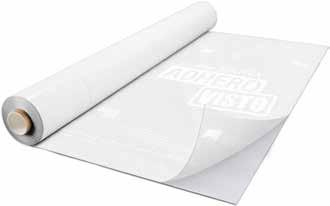

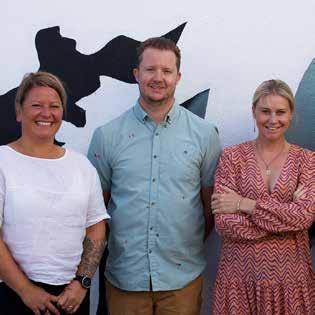


Why the buzz about ‘Always-On’? It offers three key advantages: consistent brand visibility, ongoing engagement with your audience, and the establishment of a lasting and reliable online presence.
At Wave, we develop ‘Always-On’ strategies that drive continuous growth with captivating content.
Executed well, an ‘Always-On’ digital strategy will deliver you:
• Lasting impressions: Be the first choice even when customers aren’t actively buying.
• Boundless outreach: Seamlessly omnipresent across digital platforms.
• Trust building: Consistent value addition fosters trust and credibility.
• Insights for success: Insightful reporting fine-tunes strategies, ensuring your message resonates. Talk with us today on 07 927 4444 or email hello@waveagency.co.nz.
HomePlus introduces the SunFold® Louvre Roof, a cuttingedge addition to their Outdoor Living range.
This folding and retractable louvre roof offers versatile configurations: fully closed, partially open, pivoted, or fully retracted and stacked to one side. Available in integrated, wall-mounted, or freestanding options, the SunFold® seamlessly blends traditional New Zealand
veranda or gazebo concepts with modern louvred roofing for a seamless indoor-outdoor transition.
Designed and manufactured in New Zealand, the SunFold® features a unique end pivot (EP) design for enhanced weather resistance.
Its clean, architectural look is enhanced by integrated gutters, solid aluminium gutter boxes, cover plates, and hidden drainpipes within the support posts.
The louvres pivot up to 90 degrees, and the roof can retract up to 75% of its total area. This flexibility allows users to control light and airflow or close tightly for weather protection, revolutionising outdoor living spaces.
Supported by the HomePlus nationwide installer network, the SunFold® is a stylish and practical choice for enhancing any outdoor area.
Please contact HomePlus for more information – specify@homeplus.co.nz.
SOLITEX ADHERO® VISTO, Pro Clima’s new self-adhesive, transparent, Weather Resistive Barrier (WRB), is now available in New Zealand.
Its full-surface adhesion and polyethylene functional film ensure superior protection against harsh elements during construction for trafficable intermediate floors in multi-storey CLT or woodenframe buildings.
Key benefits:
• Weather protection: Safeguards the structure against weathering during construction.
• Outdoor durability: Withstands up to six weeks of outdoor exposure.
• Enhanced visibility: Simplifies preparation work as markings, connectors, and penetrations on timber floors remain visible.
• Safe working environment: Anti-slip surface ensures a secure working area, even in wet conditions.
• Quick adhesion: Water-resistant SOLID adhesive ensures rapid, robust adhesion to subsurfaces and overlap areas.
For more information about SOLITEX ADHERO® VISTO, contact our Sales & Technical team at 0800 PRO CLIMA (776 254).
With lower sheen finishes growing in popularity, the Resene technical team has formulated a new waterborne option for those seeking a flatter style finish on exterior surfaces.
The new Resene Lumbersider Matt is designed for exterior walls, weatherboards, and landscaping elements. It is initially available in a selected range of colours, including Resene CoolColour options to help reflect more heat.
The waterborne formula will help protect projects against whatever Mother Nature brings while aligning
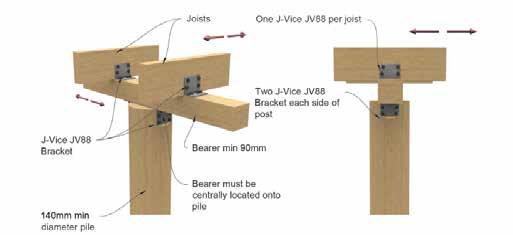


them with the matt exterior finishes trend. It is available from Resene ColorShops and selected resellers. For a low sheen finish, use Resene Lumbersider Low Sheen.
Available from your Resene ColorShop in a wide range of popular Resene colours.
In just four short years, our team has expanded across most of New Zealand, now covering 28 territories. With only four territories remaining, the opportunity to join our Red LBP is becoming quite limited. Our remaining territories are South Auckland, Auckland Central East, South Waikato, Lower Hutt.
If you’re an LBP considering a change, especially with the current
challenges in the industry, now might be the perfect time to explore an opportunity with Red LBP. Our familyoriented culture, combined with comprehensive support and training, ensures that every team member thrives both professionally and personally.
Whether you’re a seasoned professional seeking a new direction or a skilled builder eager to apply your expertise in a new way, Red LBP
The New Zealand Certified Builders (NZCB) logo is a mark of quality, representing our Association and its Members. It indicates to the public that you are trade-qualified and part of an association of the country’s most qualified builders.
It’s great to see many members using the correct and updated branding. For those who haven’t updated or are using the logo incorrectly, please replace the old CBANZ logo with the new NZCB logo and ensure you are using the correct colours.
The Association has invested significantly in the NZCB brand development and advertising, so please display the correct logo and adhere to the brand guidelines. The preferred colour of the logo is NZCB red. If red is not possible, other colour options are listed in the Brand Guidelines. When referring to the Association, use: NZCB, NZ Certified Builders, or New Zealand Certified Builders. Building a strong brand and ensuring homeowners recognise the value of engaging a NZCB member depends on using the brand correctly and promoting it widely.
Building Inspections welcomes you. Join us in delivering unparalleled service and expertise to clients across New Zealand.
Reach out today to see if Red LBP is the right fit for you.
Call 0800 113 191 or email sales@redinspect.co.nz.

For further assistance, download the Brand Guidelines (www.nzcb.nz/members/branding/) or contact the National Support Office at info@nzcb.nz or 0800 237 843.
Introducing the J Vice 12kn Pile Kit – a no-nonsense, commonsense approach for pile-to-bearer connections.
Designed with installers in mind, this heavy-duty kit goes on fast with minimal effort. Say goodbye to shaving piles, hundreds of nails, and a plethora of brackets, and hello to saving time and money. Robust and cost-effective, the J Vice 12kn Pile

We know that sounds weird, but waterproof lights on your buildings can leak, usually through the power entry gland on the back of the light.
This is because exterior lighting has glands to match the round cables used in wiring overseas, which doesn’t suit the flat TPS cables we use here in New Zealand. To keep the entry point watertight, Kiwi electricians use plenty of silicon, which isn’t exactly a lab tested solution.
SIMX Lighting decided to solve this by engineering power entry glands for its exterior lighting range that
are designed to fit TPS flat cables.
These are engineered for 3core x 1.00mm and 3core x 1.5mm cabling, the most common dimensions used for external cabling.
This innovation means the waterproof claims of SIMX Lighting products can be relied on when coupled with the wiring practices of New Zealand electricians. This new gasket is included with most of the downlighters and up/ downlighters in the SIMX Lighting exterior range, with more products making the transition over time.
Kit includes four brackets and 32 screws per kit, designed to take a little over two minutes to install.
Available directly from our team with free delivery Auckland wide, or through special order from your timber merchant.
Choose the common-sense approach and make your next build faster, easier, and stronger with J Vice!
J Vice – Built On Common Sense
Contact info@j-vice.com for more information and to request our new catalogue.

Local steel manufacturer Pacific Steel recently announced a change to the bar mark which is rolled into all of its deformed 300E and 500E reinforcing products – shifting from the previous ‘SEISMIC’® brand to a more recognisable ‘PACIFIC’™ mark.
A bar mark is important, providing assurance to consumers that they’re buying an authentic product. In this case, that means a product which has been manufactured locally for more than six decades.
It’s also about confidence and peace of mind. Pacific Steel take pride in delivering premium, earthquake-grade reinforcing products in both steel bar and coiled form. Pacific Steel is proud to be New Zealand’s only local manufacturer of reinforcing steel. Our 3rd party ACRS product certification and onsite IANZ accredited laboratory ensures our reinforcing steel is manufactured and tested to the stringent requirements of AS/NZS 4671.
For Stan Clark, GM Sales & Marketing of Pacific Steel, it was a logical change. “The Pacific Steel brand has huge market recognition, providing product assurance to an incredibly loyal industry sector”, he says. “It made sense to identify our products with the name the industry and customers know and trust”.
The ‘PACIFIC’™ bar was introduced in June 2024. During an initial transition period, products with the ‘SEISMIC’® stamp will also remain in circulation. This crossover period is expected to last approximately 12 months, depending on existing stock levels.

The last thing you want on a building site is an injury or fatality, and most businesses work really hard to try and avoid that.
Unfortunately, when you are dealing with humans, incidents still occur. In fact, WorkSafe reports that there were 11 fatalities on construction sites between July 2022 and June 2023, with 6,252 injuries resulting in more than a week away from work between June 2022 and May 2023.
For businesses like construction, where there is a higher chance of injury, it also means that there is a higher risk of being prosecuted under the Health and Safety at Work Act 2015 (HSWA).
So what do you need to know about fines and how can statutory liability insurance assist if there’s an injury or fatality on your site?
In the event of a workplace-related injury, WorkSafe may investigate and then charge the alleged offending company, as well as any directors, for potential breaches of the HSWA. These may include not ensuring a safe workplace environment, health and safety standards, and proper training/supervision.
The maximum fines that can be imposed were increased in 2018, which demonstrates the Government’s and WorkSafe’s seriousness in ensuring high standards of health and safety in New Zealand’s workplaces.
In December 2023, a building company in Auckland was convicted and fined when one of two builders working on a roof terrace accidentally stepped over the side of the roof and fell. He fractured his left hand and suffered a broken collarbone.
The starting point of this fine was $300,000, which was reduced to $150,000 following discounts for several factors such as a guilty plea, reparation, and remedial steps taken.
In January this year, a building company in Tauranga was convicted and fined following the fatal head injury of a worker lifting prefabricated timber framing.
The starting point of the fine was $500,000 with the final amount being set at $30,000 due to discounts and financial incapacity. The maximum fine available for such a breach could have been as high as $1.5 million.
Statutory Liability insurance can help fund the legal costs to defend claims brought by WorkSafe alleging a company’s breach of the HSWA. It can also cover reparation payments ordered by the Court but cannot cover fines ordered by the Court.

Statutory Liability policies may also provide cover for alleged breaches of the HSWA by directors. However, it is important to review your policy to ensure this cover is in place. In the event that a Statutory Liability policy does not cover the director(s), a Directors and Officers Liability policy can respond to the legal defence costs and reparation payments a director may face, if charged with a breach of the HSWA.
If you commit an offence as an LBP (Licensed Building Practitioner) under the Building Act 2004 and receive a fine, this may not be covered under your Statutory Liability policy. Some policies will include it; some allow you to buy extra cover to include it; and others won’t include it at all. It therefore pays to discuss what you are and aren’t covered for with your broker.
If you need to make a claim against your policy, you are often given access to legal support services through the insurer’s specialist legal panel. Access to experienced and specialist barristers from an insurer’s legal panel, who regularly fight these types of claims, can be instrumental in getting particular charges dropped and fines reduced.
If in doubt about what you are actually covered for, give us a call.
ICIB Brokerweb is the trusted insurance broker for New Zealand Certified Builders. If you would like a no obligation review of your liability cover give us a call on 0800 644 444.
REDi Builders’ Insurance is administered by ICIB Brokerweb and is exclusive to NZCB members. ICIB Brokerweb are NZCB’s preferred insurance broker and operate the NZCB Insurance helpline. They can be contacted on redi@bwrs.co.nz. or 0800 644 444 or www.icib.co.nz.






Are you spending hours doing manual reconciliation or completing forms? Do you find yourself devoting excessive time and effort to preparing quotes? Are you exhausted from handling HR and payroll tasks?
You’re not alone. Many businesses struggle with the time-consuming and often frustrating aspects of managing finances, projects, and human resources manually.
These inefficiencies not only eat into your personal time but also hinder your business’s growth and profitability.
Imagine a workweek where mundane administrative tasks are minimised, allowing you to focus on what you do best – growing your business and serving your clients. Digital solutions can transform this vision into reality. By automating and streamlining various processes, you can unlock numerous benefits, such as:
• Effective management of jobs, projects, and inventory: Keep everything organised and easily accessible, reducing errors and improving project outcomes.
• Reduced manual processing of bills and receipts: Save hours of manual data entry with automated systems, freeing up your time for more strategic tasks.
• Improved cash flow management and productivity: Gain real-time financial insights to make smarter business decisions and enhance overall productivity.
• Automated bookkeeping and forecasting: Stay ahead of your financial planning with automated tools that provide accurate forecasts and reports.
• Streamlined payroll and HR obligations: Simplify complex payroll and HR tasks, ensuring compliance and improving employee satisfaction.
• Meeting tax and reporting obligations: Ensure accuracy and timeliness in tax filings and financial reporting, reducing the risk of penalties.
These benefits are just the beginning. Embracing digital solutions not only enhances efficiency but also empowers you to reclaim your weekends, allowing you to enjoy the things that truly matter.
Let’s explore four digital solutions that can make a positive impact on your trades business.
Cloud accounting software offers significant benefits for your trades business, enhancing efficiency, accuracy, and accessibility. With cloud-based systems, you can manage your finances in real-time from any location, ensuring that you stay on top of your financial situation even while on-site.
Benefits include:
• Real-time financial management: Stay updated with immediate financial insights and updates.
• Streamlined operations: Integrate with other systems to automate invoicing, payroll, and expense tracking, reducing errors and saving time.
• Better cash flow management: Use detailed financial insights for smarter business decisions.
• Collaborative features: Seamlessly interact with your accountants or financial advisors for more effective oversight and strategic planning.
Cloud-based job management software allows you to control work from quotation to payment. Time and invoices can be automatically matched to a job, ensuring you are accurately capturing your costs. The right software offers features such as:
• Seamless supplier integration
• End-to-end job tracking with the Status Board
• Effortless quote and invoice generation
• Accurate time and material tracking
• Accessible on any electronic device
• Detailed profit and loss reporting at both job and business levels
• Integration with your accounting software
• Connection to payment gateways for faster payments
Document and data capture software simplifies capturing key information from bills and receipts. Just open the app and take a picture of the bill using your mobile. Other methods include emailing, scanning, or uploading directly into the software.
Benefits include:
• Accessibility: Access information from anywhere.
• Organisation: Automatically sort and organise documents into searchable folders.
• User-friendly: No limit on the number of users, with apps available on Apple Store and Google Play.
• Integration: Seamless integration with your accounting software.
HR software simplifies your HR and payroll functions, managing your team from interviews and onboarding to offboarding.
Features include:
• Automate pay runs and generate payroll reports
• Workflow management with dynamic rostering
• HR policies and paperless onboarding and offboarding
• Integration with your accounting software
The right software can significantly enhance your trade business and work-life balance by streamlining communication, boosting efficiency, and increasing profitability. Choosing the right tools can be challenging, but fortunately, you don’t have to do it alone.
At Findex, our business advisors and digital solutions team can help with a complimentary 45-minute health check*. Our experts will assess your business, identify areas for improvement, and provide a summary of detailed outcomes and practical next steps. It’s not too late to reshape the way you work and reclaim your weekends.
*T&Cs apply


Scan here to secure your free health* check now!
Disclaimer.
The views and opinions expressed in this article are those of the author/s and do not necessarily reflect the thought or position of Findex. The title ‘Partner’ conveys that the person is a senior member within their respective division and is among the group of persons who hold an equity interest (shareholder) in its parent entity, Findex Group Limited. The only professional service offering which is conducted by a partnership is external audit, conducted via the Crowe Australasia external audit division and Unison SMSF Audit. All other professional services offered by Findex Group Limited are conducted by a privately-owned organisation and/or its subsidiaries.
© Findex Group Limited 2024. All rights reserved June 2024
Nigel Smellie, Findex Partner in Accounting & Business Advisory. Nigel has been with Findex since 2001 and a Partner since 2007. With a passion for digital solutions, Nigel excels in providing business advisory services that empower clients to make informed, timely decisions. Nigel is committed to ensuring his clients have the tools and information they need to achieve their business goals.

Have you got a current Sika BlackSeal® Elastic applicator certificate?
If it’s more than a year old you’ll need to quickly brush up on your Sika BlackSeal® Elastic know-how again. Either way, no drama. Just complete the free, short online course (it’s available 24/7), and it’ll be ‘job done’ for another year.

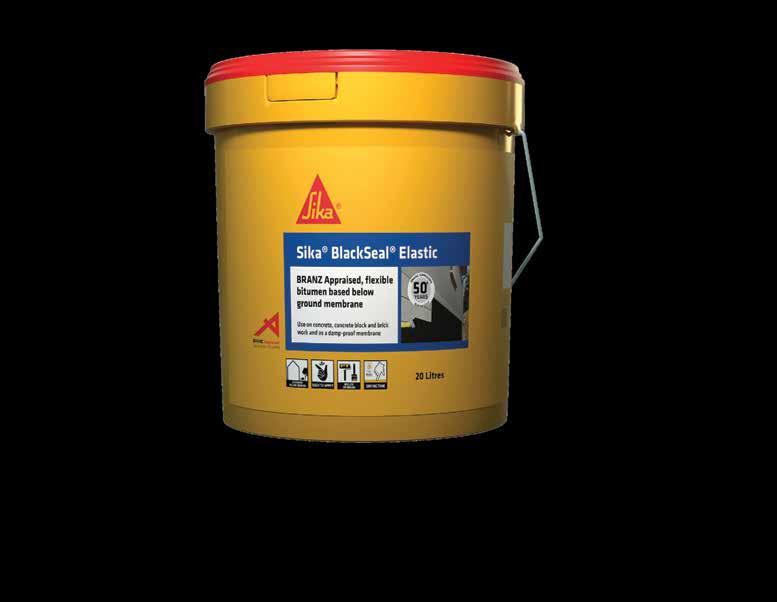

In the current economic climate, people are starting to tighten their purse strings and cut back on discretionary spending. Unfortunately, that discretionary spending includes construction projects.
In times like this, the construction industry is hit the hardest. This is because the construction industry tends to go through extremes in economic cycles. Either there is a “boom” or there is a “bust”.
Some of the older, more established businesses as well as larger commercial entities tend to have a buffer which sees them through these tougher periods in this economic cycle. Newer businesses or businesses that take bigger risks and have smaller cash flow, tend to suffer more.
We are seeing more and more businesses take on jobs that they would normally pass over. Sometimes, this includes entering into contracts with “red flags” that otherwise would have been off-putting. Essentially, businesses are taking on more risk, and in those circumstances, it is important to protect yourself against possible non-payment.
The most important thing to do is ensure that risk is allocated appropriately at the beginning of a project. In other words, it is important to have a good contract in place at the outset of the job. Fortunately, there is a suite of New Zealand Certified Builders (NZCB) contracts available on the Toolshed that have been drafted to protect builders in the event of non-payment.
We are currently seeing more requests for significant amendments to contracts. We see this as a symptom of the current economic climate, firstly because clients wish to protect themselves more as they are more nervous and, secondly, because companies are taking on more contracts from difficult clients.
When it comes to negotiating the contract, there are some clauses you can negotiate but some which we would suggest you do not compromise on, particularly in the current climate. We are now in an environment in which people are tightening their purse strings. It may not be a case of clients refusing to pay but simply a case of them facing unexpected issues and then being unable to pay.
Security for payment can take different forms. The best form of security is a cash security as it is easily accessible.
The NZCB contracts include provision for a deposit, which is not a traditional deposit that would be applied to your first invoice, but rather is a security for payment of invoices. It is intended to be held onto by the builder throughout the project and applied to the final invoice for the project.
The reason for this is that it is generally towards the end of the project that money starts to run out, or in cases of difficult clients when they decide they no longer wish to pay for your services. For that reason, you can apply this deposit to those unpaid sums at a later stage.
The most important thing to do is ensure that risk is allocated appropriately at the beginning of a project. In other words, it is important to have a good contract in place at the outset of the job.
The NZCB contracts also allow you to apply the security to unpaid invoices if there is a default in a payment before completion of the project. That is, if invoices are overdue and it becomes clear that your clients will refuse to make payment of those invoices, this security can be applied to those invoices.
If you are able to resolve issues between yourself and the client but have applied the deposit to unpaid invoices, at that stage you should request further security before proceeding. The NZCB contracts allow you to do so in situations where your client has given you reason to believe that they are either unwilling or unable to make payment.
We suggest that for any security, whether it be the initial deposit or further security, that it be large enough to cover what you expect your largest invoice to be.
The NZCB contracts also include provisions which give the builders an equitable mortgage over the title of the property.
An equitable mortgage is a mortgage which has not been registered on the title to the property. In this instance, the property owner has agreed in writing to grant such a mortgage over the property by way of contract, but the mortgage has not been registered against the title via LandOnline.
In order to enforce an equitable mortgage under the NZCB contracts there are essentially two options:
1. Register the mortgage through the Courts and then use the provisions in the Property Law Act 2007 for payment defaults; or
2. Obtain a judgment in your favour for the unpaid sums first and then look to enforce it by way of a sale order.


In terms of registering the mortgage through the Courts, this must be done by way of application to the Court. If it is contested, this process will take several months. Once you have registered the mortgage on the title to the property, you can then issue a notice of default for your unpaid invoices pursuant to the Property Law Act 2007.
Another option is to obtain a judgment via the Courts or a determination under the Construction Contracts Act 2002 by way of adjudication in the first instance. For example, we have previously enforced payment claims through the Courts and obtained judgment. If those clients have refused to pay even after judgement has been issued against them, we have applied to the Court for a sale order.
Another consideration is the amount of the equity in the property. For example, if there are other prior registered mortgages, those will take precedence and it is only once those have been satisfied that any remaining equity can go towards payment of your unpaid invoices. For this reason, we consider a cash security to be much more valuable.
Finally, there are steps you can take throughout the project to keep things sailing smoothly.
NZCB contracts allow you to apply the security to unpaid invoices if there is a default in a payment before completion of the project.
Communication is key. Let your clients know when you see an unavoidable but unforeseen cost. If variations are requested, remind them that this will cost more. Where possible, do this in writing so there is a record of it.
You can also limit your exposure by suspending work under the contract if payment is not made. This can be done under the NZCB contract by way of email, effective immediately.
We know times are difficult, and this is being felt by both builders and clients and, unfortunately, this does increase the risk for exposure. In these times, do take all steps you can to protect yourself, both at the outset of the project and throughout.
This article is not intended to be relied upon as legal advice.
Kiren Narayan, Senior Associate and construction law specialist, Martelli McKegg Lawyers. Martelli McKegg Lawyers operates the NZCB Building Contracts and Business Related Legal helpline for NZCB members. Contact Kiren on (09) 300 7632 or krn@martellimckegg.co.nz for 20 minutes of free advice.

When talking with people developing a digital marketing strategy to help with lead generation, I often get asked “Should I use Google ads or Facebook ads?”

The answer really depends on what type of clients you are looking to attract to your business; where they are in their buying journey; and the type of work you do. Both platforms have their strengths and weaknesses, and the choice between them should be based on your specific situation.
In the broadest terms, Google ads help you find new customers, whereas Meta ads (Facebook/Instagram) help new customers find you. That may seem like a subtle difference but it’s an important one.
One depends on a client’s active search for a builder (Google), while the other is all about building a brand and engaging with potential customers. One is focused on need and one is about research. To help explain this in a bit more detail, here’s a comparison to help you decide where to focus:
1. Intent-based advertising. Google Ads are primarily searchbased, meaning users actively search for products or services using keywords. This results in a higher likelihood of reaching users with a strong intent to purchase as they are likely further through their purchase journey. This is particularly the case when the searcher has a high need for a service. Something is damaged or unsatisfactory and is causing them frustration.
2. Keywords. You can target specific keywords related to your business, allowing you to connect with users searching for exactly what you offer. Understanding your target market really well and what they are likely searching for is important to get the best return on your Google ad buy.
3. Variety of formats. Google ads are primarily text-based ads but also offer other formats, such as display ads and video ads.
4. Local targeting. You can target specific geographic locations, making it ideal for local businesses. Meta ads will be better at targeting in other ways such as a client’s age or demographic.
5. Expense. Google ads are more expensive than Meta ads and competition for some popular keywords can drive up the cost quite quickly. You have control over your budget however and can set daily spending limits.
6. Landing pages. It is important to have a good website landing page where searchers end up after clicking on your ad. If they have expectations based on what your ad says, but the website has a conflicting message or feel, you may turn the searcher off from proceeding further.
1. Audience targeting. Meta Ads are the best in audience targeting, allowing you to reach users based on demographics, interests, behaviours, and more. Meta knows a huge amount about their (nearly) 3 billion users, including their interests, favourite content, beliefs, values and so on. It’s scary but also very useful from a marketing perspective. This is particularly useful for brand awareness and reaching a wider audience. Meta ads (and free posts) are useful to connect with potential customers who are still in research mode and not yet ready to make contact with you.
2. Visual platforms. Facebook and Instagram are visual platforms, so it’s great for promoting visually appealing products or services through image and video ads. Visual ads are generally easier to consume by an audience, although you still need to produce attractive content to stand out from the crowd.
3. Retargeting. You can retarget users who have interacted with your website or app, which can be highly effective for conversion campaigns. If you have been stalked with ads after visiting a website, you know what I mean. You can also build lookalike audiences based on key features so your ads can be put in front of a bigger number of target customers.
4. Budget. Meta Ads can work with smaller budgets, making it accessible for businesses of all sizes. They are generally cheaper than Google and so you can make your advertising dollar go further.
5. Lead ads. It is possible to use Meta ads without having a website by using their lead ads format, which effectively provides a mini landing page to deliver further messaging. But I still recommend you have a good website.

In summary, Google Ads are often better for businesses looking to capture users with a high need and intent to purchase, while Meta Ads are ideal for building brand awareness, reaching a specific audience, providing trust-building information and engaging with users on a social platform. Google Ads may work faster and attract people with a more urgent intent of purchase. Meta ads work better with engaging with people who are in the earlier “awareness” and “research” modes of their journey.
Rather than choosing one or the other, however, it might be a better approach to treat the platforms as complementary, rather than adversarial. Many businesses find success using both platforms in tandem to achieve different marketing objectives. Ultimately, it’s essential to consider your goals, target audience, and budget when deciding which platform to use, and you may also benefit from A/B split testing to determine which platform performs best for your specific campaigns.
In the broadest terms, Google ads help you find new customers, whereas Meta ads (Facebook/ Instagram) help new customers find you. That may seem like a subtle difference but it’s an important one.
If you want some help in reviewing your marketing activities, book in for a complimentary Marketing Audit with me and then discuss some changes you should consider. Email me at andy@tradescoach.co.nz with the subject line “Marketing audit”.
Andy Burrows, Director of The Trades Coach and NZCB National Partner (Starter). I encourage you to take advantage of a free business strategy review session to see how we can improve your business performance. Call Andy today on 027 688 6721 or email andy@tradescoach.co.nz.

✓ Promotes superior drying capacity with Hydrosafe® technology
✓ Intelligent airtightness system (IAS) for warm, dry, healthy buildings
✓ Maximises the performance of thermal insulation
✓ Made of 50% recycled content in the nonwoven layers
✓ Superior back-di usion capacity in summer
✓ Highly di usion-resistant in winter








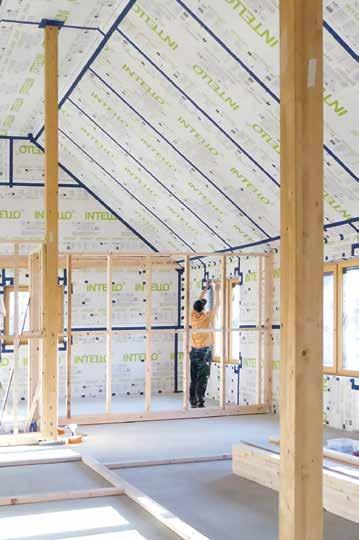







Personal grievance claim remedies are increasing, with more awards of $25,000 and over as compensation for hurt and humiliation (injury to feelings and distress) being awarded by the Employment Relations Authority (Authority) in 2023.
The table below shows the increases from the previous year:
In a similar trend, the Employment Court in a 2023 decision updated the bands that determine the compensation awards for personal grievances as follows:
• Band 1: (low-level loss or damage): Up to $12,000 (previously up to $10,000)
• Band 2: (mid-range loss or damage): $12,000 – $50,000 (previously $10,000 – $40,000)
• Band 3: (high-level loss or damage): over $50,000 (previously over $40,000)
There have been several recent cases involving builders that show the impact of these increasing awards.
In December 2023, the Authority awarded Mr Wang, an experienced builder, $23,120 in compensation following his dismissal.
Y & L Building Limited, the employer, believed it was going bankrupt after it suddenly lost a work contract. Mr Wang was dismissed and being informed that there would no more work available and that he should seek other employment. He was able to find another job but quickly learned that his ex-employer had found new work and was able to stay afloat after all. Mr Wang then raised a personal grievance for unjustified dismissal.
It was accepted that there was no ill-intent by the employer, who genuinely believed there would be a lack of work and had been open with Mr Wang about the situation. However, the Authority held the employer had made two mistakes:
1. Failure to investigate the circumstances before dismissing Mr Wang. The employer may not have decided to end his employment if more time had been taken to investigate potential work; and
2. Failure to allow Mr Wang a reasonable opportunity to respond before being dismissed. This was contrary to the employer’s obligation to conduct a fair process when terminating an employee.
As a result, Mr Wang was successful in his claim and received this significant payout.
In February 2024, Mr Cooper, an apprentice builder, was awarded just under $10,000 when he was dismissed by his employer.
Mr Cooper had an unpleasant altercation with the site foreman, where hostile words were exchanged, and he ended up threatening the foreman with a nail gun.
Following this incident, the employer emailed him three letters, all on the same day:
1. The first letter said the employer would investigate the incident, stating no decision had yet been made on Mr Cooper’s employment and he would have the opportunity to respond;
2. The second suspended him temporarily to enable the investigation to proceed; and
3. The third dismissed him entirely, relying on a 90-day trial period in his employment agreement.
Mr Cooper raised a personal grievance for unjustified dismissal and was ultimately successful, with the Employment Relations Authority finding the 90-day trial was invalid, and that the employer hadn’t followed a fair process.
So what do these cases and awards mean for employers?
The financial risk of claims has increased, which means it’s more important than ever to take appropriate steps to mitigate the risk of claims, particularly by following a fair process around employment disputes.
It also means that employees’ expectations of settlement of claims are increasing, and taking a strategic approach to resolving matters raised is crucial.
If you need support in dealing with an employee, feel free to call the helpline (0800 354 821). Our team can assist in ensuring you get it right from the start.
Disclaimer: We remind you that while this article provides commentary on employment law, health and safety and immigration topics, it should not be used as a substitute for legal or professional advice for specific situations. Please seek legal advice from your lawyer for tailored legal advice.
Kate Ashcroft Partner, of Copeland Ashcroft Workplace Lawyers Copeland Ashcroft Workplace Lawyers operate the NZCB Employment helpline, offering specialist advice, representation and support across employment, immigration and health and safety law, to businesses throughout New Zealand. Call 0800 354 821 or visit www.copelandashcroft.co.nz


Systemising your business is the key to unlocking greater efficiency, profitability and growth. While the process might seem daunting, it’s not as complicated as you think. In fact, investing time and effort into creating good systems will pay off in spades!
Creating consistent workflows for all areas of your business keeps things simple, reduces the risk of mistakes and saves time and money. Whether it’s project management, handling client communications or processing invoices, having a set system will help everything run smoothly.
With clear, detailed instructions for every task, anyone can pick up where you left off. This is a lifesaver when key personnel are sick, injured or on leave. It also speeds up the training of new employees, making sure they’re up and running quickly.
When choosing software for your business, be clear about the problems you’re trying to solve. Whether it’s project management, accounting or customer relationship management, selecting the right tools is essential. Look for solutions that integrate well with your existing processes and address your specific needs.
Great systems are an absolute game-changer. They free up time that you can spend on more important things, including growing your business, increasing revenue and improving profitability. Instead of getting bogged down in day-to-day operations, you can focus on strategic planning, business development and client relationships.
With clear processes in place, you can confidently delegate and outsource tasks to team members or external partners, knowing they have everything they need to do the work well.
Without good systems, the ability to grow your business is stifled. As you try to scale, any inefficiencies or problems in your current operations will also escalate (think of a wobbly wheel falling off a cart). Efficient systems help create a solid foundation that supports sustainable growth and ensures that scaling up doesn’t create more problems.

A well-systemised business can continue to operate smoothly, even without the constant presence of directors or owners. This operational independence is crucial for long-term stability and adds tremendous value to your business. Whether you’re taking a well-deserved holiday or planning your exit strategy, knowing the business can run without you is a huge bonus.
Good systems not only improve day-to-day operations, but also add significant value to your business. For potential buyers or investors, a well-organised, efficiently run business is an attractive proposition. It demonstrates reliability, scalability and a lower risk of operational hiccups, making effective systems critical to any successful exit strategy.
Systemising your business is a worthwhile investment that can lead to significant improvements in efficiency, profitability and growth. So, roll up your sleeves, get started and watch your business thrive!
Amanda Chisholm, Director, My Smart Office and National Partner (Starter) of NZCB. Amanda runs a successful residential building company with her husband and uses her 20+ years’ experience in bookkeeping, administration, customer communication and sales to help builders manage their accounts and administration, increase revenue and gain time. www.mysmartoffice.co.nz

It’s part of our job to be excited about the new software features available to builders and other tradespeople. And while that’s a fairly niche interest, it’s a field with lots to be excited about right now!

Many of our favourite job management software platforms and apps are releasing fantastic integrations, automations, and more – read along and keep up with what’s new in the tradie tech world.
Financial management is crucial for SME owners. Tidy books, happy tradespeople! Here’s a tidbit that will be of particular interest to those using BuildXact: you can now pull information across from Xero or Quickbooks even more seamlessly, directly importing bills and receipts. Easy!
A Rave Build update has made invoicing more customisable. Previously, in the Progress Payment sub-tab, you could only create a client invoice by selecting multiple invoiceables and allocating a percentage. Now, you can allocate specific dollar amounts to each invoiceable added to the client invoice.
Over at the intersection of Buildertrend and QuickBooks, a new integration feature has appeared: Credit card and vendor credits now appear under the new QuickBooks ‘Costs’ column for a clearer financial view of each job. Additionally, you can now invoice actual costs to QuickBooks Online – there’s a new QuickBooks Costs option in Owner Invoices. Buildertrend has also streamlined its project costing capabilities so that you can analyse profit impacts from labour, scope changes, and unexpected expenses in real time.
estimation
into their platform. This collaboration makes it simple to design, takeoff, create 3D models, and manage project documentation all within Builda Price. Great news for their users!
In some exciting news, ServiceM8 has rolled out a FREE plan for sole traders. This includes one user, 30 job credits per month, 10 AI assists per day, recurring jobs, and all of the essential features necessary to operate smoothly. A fantastic opportunity for man-in-a-van tradespeople!
Rave Build’s other recent update is a simple but very helpful addition: a secondary client login. This allows users to give access not only to the client but also to other stakeholders who need it such as an insurance company or KO. They can access things like the progress payments/invoice tab, the schedule, variations, and checklists. Additionally, there is the ability to split invoices between the primary client and/or secondary client.
Buildertrend has released Buildertrend Chat, a new instant messaging feature that consolidates communication into one central location. Users can start individual conversations or create group chats with team members, subcontractors and homeowners via desktop or mobile.
Nextminute’s recent app overhaul is promising to make it even easier to use this favourite piece of software on the go and comes with a few fantastic new features such as enhancements to the timesheet

interface and a fresh new look for job cards that will help users to see and understand charging information quicker. They’ve fully redesigned the mobile app for iOS and Android and rebuilt it from the ground up on a much faster, more stable infrastructure. We can’t wait!
This powerful and popular software has been on its game recently, releasing a slew of updates. Here are the highlights:
• A GPS integration with ProFind.
• The ability to save or import signatures to sign documents digitally.
• Highlighting of charges on jobs, projects, and quotes without a sell price.

• More categories for effective materials management.
• Updated time assignment: the ability to assign time items to a specific worker and have it visible only to them.
• Enhancements to functionality for field workers including better filtering of materials.
• The ability to set tax rates per customer.
These are just a few of the recent updates in the world of digital tools for tradespeople. Job management software and apps can make such a huge difference to the operations of businesses of all sizes – but to take advantage of their functionality, you have to know about it! It’s important to stay up to date with what’s happening with your JMS.
Need help choosing the right digital tools, setting them up, and making sure you’re getting as much value from them as possible? Call in the experts! FreeUp are software specialists for construction and the trades. Get in touch at www.freeup.co.nz, and find them on social media for more news, views, and updates on all things trades and tech.
Kelli Beaumont, FreeUp . FreeUp is a NZCB National Partner (Starter) and tech advisor for builders – making the process quick and easy, from selecting the right software to setting up the system to training staff. FreeUp also operates the NZCB Technology and Software helpline for members. Contact us on 021 149 8785 or visit www.freeup.co.nz

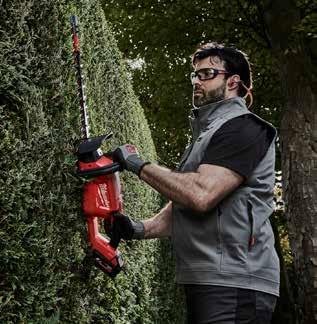

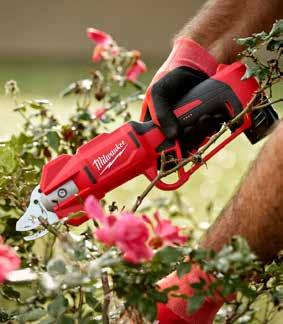

The importance of construction to New Zealand’s economy and society cannot be overstated. Yet, the industry is filled with uncertainties. This often leads to disputes over a range of issues including timelines, workmanship or general contractual interpretation. The problems are compounded by the fact that traditional litigation can be costly and time consuming.
Fortunately, builders have several alternative dispute resolution (ADR) methods available to resolve conflicts outside of court litigation. These methods aim to be more cost-effective, faster, and less formal than going to court, promoting quicker resolution and ensuring the parties can keep their information confidential.
With over 20 years of experience in the avoidance, management and resolution of building and construction disputes, the Building Disputes Tribunal (BDT) is recognised and respected as the leading independent, nationwide provider of specialist dispute resolution services to the building and construction industry.
Here’s a brief overview of the ADR options provided by BDT:
• Adjudication: Statutory adjudication is a relatively quick process specific to construction contracts. It allows for prompt decisions on payment disputes or other urgent matters, ensuring cash flow is maintained during projects. The process does not involve hearings by the parties.
The Construction Contracts Act 2002 (CCA) directs how adjudication operates in New Zealand, emphasising speed, efficiency and fairness in resolving decisions (BDT is an Authorised Nominating Authority under the CCA). Adjudicators, typically experts in construction law and industry practices, make enforceable decisions based on evidence presented by both parties.
• Mediation: Mediation is a consensual process where the mediator, a neutral third party, assists the disputing parties in reaching a mutually acceptable settlement. Parties involved in construction disputes often use mediation due to its flexibility and the opportunity it provides parties to control the outcome. Mediators enable discussions, identify issues, and facilitate negotiations, but they do not make binding decisions.
• Arbitration: Arbitration involves referring a dispute to one or more arbitrators who make a binding decision. The process can be faster and more flexible than court proceedings, and parties can agree on the arbitrators, often choosing individuals with specialised knowledge in construction law and practices.
• Arb-Med: Arbitration-Mediation is a hybrid process that combines arbitration and mediation. Arb-med combines the finality of arbitration with the flexibility of mediation. Parties can start with a defined process and move towards mediation if arbitration does not initially resolve the dispute.
• Expert Determination: Expert determination involves appointing a qualified expert to determine technical or specialised issues in dispute. This method is useful for resolving disagreements on matters requiring specialised insight, such as structural defects or engineering designs. The expert’s decision is usually binding unless agreed otherwise by the parties. Expert determination utilises the chosen expert’s knowledge and experience.
• Early Neutral Evaluation: Early neutral evaluation takes place early in the dispute resolution process. During early neutral evaluation, the parties present a summary of their case to an evaluator, highlighting key legal and factual issues. The evaluator then delivers an objective assessment of the strengths and weaknesses of each case.
The choice of ADR method often depends on factors such as the nature of the dispute, urgency, potential cost, and the intended level of control over the outcome. The availability of these ADR methods means that builders can continue project work without letting disputes weigh them down.
For more information, please contact our team at 0508 284 534 or registrar@buildingdisputestribunal.co.nz to see which process is best for your situation.
Disclaimer: Information published in this article is not intended to be comprehensive. No person should act in reliance on any statement in the article and the Building Disputes Tribunal accordingly does not accept any responsibility. Readers are advised that specialist legal advice should be sought in relation to all matters covered in this article.
Alexander Lyall , Research Clerk at The ADR Centre BDT is part of the ADR Centre. BDT provides guidance to parties and their advisers as to the most appropriate dispute resolution process for their dispute. Call (09) 9 486 7143 or 0508 284 534, email registrar@buildingdisputestribunal.co.nz or visit www.buildingdisputestribunal.co.nz

WORK SMARTER
Have your team work smarter, learn up-to-date skills.
TRAIN AN APPRENTICE
ALREADY HAVE THE EXPERIENCE?
GROW YOUR BUSINESS THROUGH TRAINING
ARCHITECTURAL ALUMINIUM JOINERY
Help them learn the skills and become qualified.
Get skills recognised with a formal qualification.
Training an apprentice is an investment in your business and the industry.
INTERIOR SYSTEMS
BRICK AND BLOCK LAYING JOINERY
CARPENTRY KITCHEN AND BATHROOM DESIGN
CONCRETE PAINTING AND DECORATING
EXTERIOR PLASTERING
RESIN FLOORING
FLOORING STONEMASONRY
FRAME AND TRUSS FABRICATION
GLASS AND GLAZING
SUPERVISOR
TILING

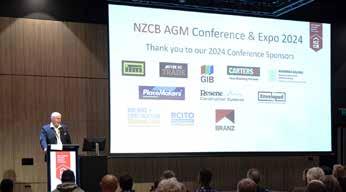

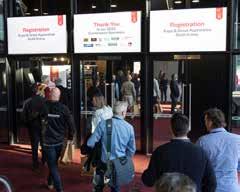





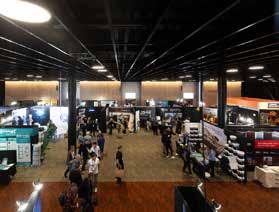
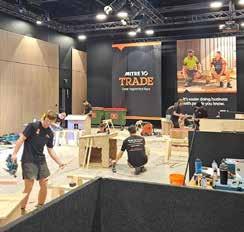






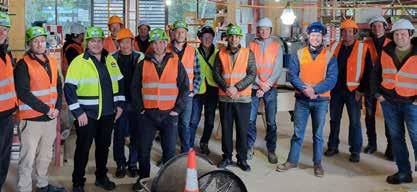









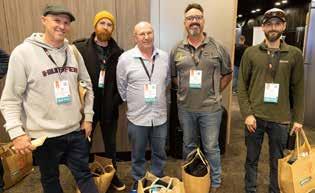


The New Zealand Certified Builders (NZCB) AGM, Conference and Expo in Wellington was an event filled with learning, networking, and entertainment. From start to finish, it was clear that NZCB continues to raise the bar year after year.
This year’s conference boasted an exceptional range of keynote speakers who captivated and inspired the audience. Sir Ian Taylor was a standout with his innovative ideas and entertaining delivery. His journey from smalltown New Zealand to the global stage was truly motivational. His speech highlighted the importance of staying true to one’s roots while embracing global opportunities. Melissa Clark-Reynolds brought a wealth of knowledge, focusing on helping companies understand the future and build resilience. Her emphasis on sustainable business models resonated, as did the practical insights she offered on future-proofing businesses. Her session encouraged attendees to think critically about the future of their industries and how they could contribute to a more sustainable world.

I was moved when talking to a NZCB member who was telling me how he remembers the news broadcast and how much his perspective changed after hearing Abbas speak.
Our Saturday education and technical sessions offered learning from builders just starting out to seasoned business owners, and all sessions were well attended.
Good vibes all around.
This year, NZCB opted to donate native trees in lieu of presenting our Saturday speakers with gifts. Trees were donated to the charity Trees that Count, and this is a practice we intend to continue. This initiative reflects our commitment to growing our own sustainable practices.
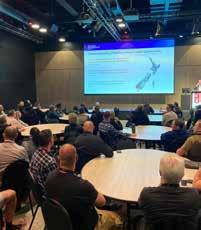
Our closing speaker, Abbas Nazari – one of over 400 asylum seekers rescued by the Norwegian container ship MV Tampa in 2001 – shared his powerful story of resilience and hope. His journey from seeking asylum to being resettled in New Zealand was both moving and inspiring, reminding us all of the importance of compassion and support. His personal narrative brought a really human element to the conference, emphasising the global context in which we operate.
Liked that you could pick and choose which sessions to attend.
Thank you to our 2024 Sponsors
The exhibitor stands were impressive, many featuring engaging activities and competitions that kept everyone very busy and entertained. From navigating a remote controlled forklift around a tight course, cycling against the clock, and spinning to win a massive range of prizes, the stands also provided information and opportunities for networking. The exhibitors’ creativity and innovation were on full display, making the expo a vibrant and bustling part of the conference.



The NZCB Apprentice Challenge Sponsored by ITM finalists brought an extra level of excitement.
I had heard a lot about this group so I was keen to see what they brought with them, and I was not disappointed! The group competing to win the ultimate prize saw apprentices showcasing their skills from building, to completing a formal exam and public speaking. This year’s speech topic ‘Your Favourite Carpentry Tool and why’ was both entertaining and informative.

Technical sessions were a good mix and really informative.
The speeches offered something for everyone, including a group of more ‘senior’ NZCB – with more than 100 years of combined experience – learning why a builder’s pencil isn’t round (it doesn’t roll away!). And who could forget the amusing/shocking image of the chainsaw-wielding cowboy, which added a touch of humour to the proceedings. This unexpected and entertaining visual reflected the tone of a conference that balanced professionalism with a sense of fun.

Beautiful venue with well-placed trade stands, learned a lot.
The entertainment MCs Petra Bagust and Jackie Clarke were absolute highlights for many. Their engaging style and humorous banter kept the audience entertained and the event running smoothly. For those young ones who didn’t know these New Zealand icons before the conference, they certainly do now!
A delicious dinner, the presentation of awards and a ‘creative’ rendition of Pōkarekare Ana from Jackie, was topped off with news that the Silent Auction had raised close to $12,000 for the NZCB Apprentice Trust. Once the formalities were over, the evening was lead out by the fantastic local band, The Relatives. The dance floor was chocka, with the crowd singing along to familiar classic tunes until close, wrapping up the conference on a high note, and creating lasting memories for all who attended.

Overall, my first NZCB AGM, Conference & Expo, was an unforgettable experience. The blend of education, inspiration, and entertainment made it a standout event. Thanks to all who attended and all those working behind the scenes to make it happen.
Here’s to another year of growth, learning, and community. See you all next year!
Marcia Hintz
NZCB Education and Events Manager



Over the years, the New Zealand Certified Builders Association (NZCB) has benefitted from the exceptional contributions of dedicated individuals.
Their hard work and commitment have been instrumental in setting NZCB on a solid foundation and have helped us achieve our goals as an association over many years. In recognition of these contributions three individuals were recognised with Honorary, Life, and Appreciation awards at the NZCB AGM, Conference & Expo in June.
Honorary Members must be individuals who have made a contribution to the Association or the Construction Industry that in the opinion of the Board is significant.
Geoff Hardy
Lawyer Geoff Hardy’s association with NZCB started in 2005 when future NZCB Chairperson, David Brown, mentioned the NZCB to him. This quickly led to an invitation to become an Independent Director on the NZCB Board – a position Geoff held from 2005 to 2014.
It was through the NZCB connection that Geoff moved into the construction law space. His work for the Association included

Life Members must be individuals who have made a contribution to the Association that in the opinion of the Board is extraordinary and worthy of special recognition.
Appreciation awards are awarded to individuals within a region who in the opinion of the regional committee are worthy of special recognition for contributions to the region.
Chris Boyle
This award is for an outstanding contribution to the NZCB Auckland membership and committee. The huge amount of time and the tireless work that Chris has invested into NZCB Auckland activity has been incredible.
Chris always maintains a member-first approach to everything, and his continual drive to up-skill and lift the knowledge of our members is an inspiration.
running the highly regarded NZCB Legal Helpline; writing 100 construction law articles for InHouse Magazine; and the development and maintenance of the NZCB building contracts, the last edition being produced in 2023.
Learn more about Geoff’s journey at www.vimeo.com/983974755

Michael Craig Michael joined NZCB when it was founded in 1998, and across his 26 years of membership has represented the Association at several industry forums, including being a Steering Group Member of the first iteration of the Construction Sector Accord, and two terms on BRANZ’s Building Research Advisory Council.
Michael was Vice Chairperson of the NZCB Board (2018-2020) and Chairperson (2020-2021). He is currently a trustee of the NZCB Apprentice Trust, and an Advisory Panel Member for Halo Guarantees Limited.
Learn more about Michael’s journey at www.vimeo.com/983975127
Chris has recently stepped into the Auckland Committee Vice President role, and his vast network within the building industry, and his positive can-do attitude, continues to be a real asset to the Auckland team and will play a large part in the regional committee’s success.
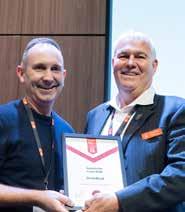
We are proud to be the only glass wool insulation manufacturer to use over 80% recycled glass in every Pink® Batts® insulation product we produce. We source our recycled glass right here in New Zealand, saving waste that would otherwise be going to landfill.
We’re the only glass wool insulation manufacturer in the country and every product we make at our Penrose site is designed and tested specifically for New Zealand’s unique conditions.
Even our big pink bags are made from recycled plastic and through our local partners Astron Plastics, can be recycled again and again after use.
PinkFit® is our nationwide installer network to help make sure Pink® Batts® is installed correctly and performs for the life of the building.
Our recent work with Envirocon is exploring the opportunity of taking Pink® Batts® waste from site and re-purposing it into the creation of concrete blocks. Trials are already underway on this opportunity with the first round of results expected in 2024.


Once again, it was a crisp start to my adventure. When I arrived at the start point at 7:30am, it was 3°C. However, by 9:00am the sun was up, the roads were dry, and we were off like a herd of turtles. A local New Zealand Certified Builders (NZCB) stalwart (Malcolm Clark) was there to see me on my way. As usual, the first stopping point was the Sheffield Pie Shop. Once the formality of dealing with morning tea was seen to (pie and coffee, of course), we headed for the hills.

‘Gemma’ and I took Porters Pass without much stress. We might have been down to first gear, but that was still better than those who had to walk their scooters up. Next break was at Lake Lyndon. Once again, it was primarily a regathering place, and somewhere to stretch legs, refuel if needed, and swap riders if in a team. Two years ago, we were knee deep in snow at this point – this year the lake was barely half full, and all the surrounds were dry. No complaints, as the sun was still out, and the wind was negligible.
The trip from here through to Arthur’s Pass was enjoyable. The lead support vehicle sat on 60kmh, a very comfortable speed for the majority of us. Arthur’s Pass is the lunch break, so we were there for about an hour. An excellent lunch was provided, and another opportunity to refuel and make any mechanical adjustments. Of course, a BIG rush and long queues for the toilets. The tourists mostly had bemused looks on their faces, probably wondering why all these ‘nutjobs’ were riding such scooters into the mountains.
At this point, I put my wet weather gear on as the skies were looking pretty dark. We left Aurthur’s Pass just as the drizzle was setting in, and by the time we got to the top of the Viaduct, I was pleased I had put my extra gear on. The journey from Otira to Kumara was a great run, with the weather alternating between drizzly and proper rain. Kumara was a brief stop, mainly to gather us all back to one bunch, a quick refuel and repair session for those that needed it, and off to Hokitika. The scooters did a lap of the township before heading to an enthusiastic welcome at the finish line. It was near dark by now, and as I was staying with friends back in Kumara, I took a quick photo stop and headed back. I had to ride my scooter back home on the Sunday as I had no backup vehicle. A shame I couldn’t catch up with Rodney and Kaye Archer, but it saved me about an hour on Sunday’s ride home.
The ride home was largely uneventful, although pretty wet. I was on my own for most of it, but there were a few other hardy souls making the same return trip. It took about 4 ½ hrs from Kumara to home, for the most part travelling at the blistering pace of 70kmh. The Otira Viaduct had me back in first gear, but at 10kph, I was still going faster than most trucks go up there.


This is the second time I have done this trip with ‘Gemma’. She is a surprisingly comfortable wee scooter, and very reliable. At about 48.5 km/lt (137mpg), it’s also hard to grumble about fuel economy. Our next run is the Southern Scooter Safari – Bluff to Queenstown. This will be on Saturday 7 September. Perhaps some of you will consider supporting the cause. More information on this to come…
Richard Poff NZCB President West Coast


The 2024 New Zealand Certified Builders (NZCB) Apprentice Challenge Sponsored by ITM saw 20 apprentices competing for the Ken Read Memorial Trophy and the overall title of Winner 2024.

They came together in Wellington, at Tākina Wellington Exhibition and Events Centre from 20-22 June. It was clear from the start that the calibre of finalists was high, evidenced by the high scores recorded in the Industry Trade Examination.
The 2024 judging panel consisted of returning judge Jason McClintock, and two new judges – Doug Connors from Winstone Wallboards, and last year’s winner Alex Erickson of Chatterton Homes. The judges reported just eight marks separated the top three place-setters and noted that the overall results weren’t confirmed until the final assessment occurred – the public speaking presentations.
The winner of the NZCB Apprentice Challenge Sponsored by ITM, and recipient of the Ken Read Memorial Trophy was Daniel Smith of Structured Builders Limited. Daniel aged 32, represented Auckland (South of the Bridge) and is a humble and quiet operator whose professionalism was evident from the early requirements of the national final. This was displayed by the calibre of his

written and verbal communication before arrival in Wellington and confirmed by the Judges during his quality presentation and interview assessments.
Congratulations to Daniel, who receives a $10,000 prize package from ITM.
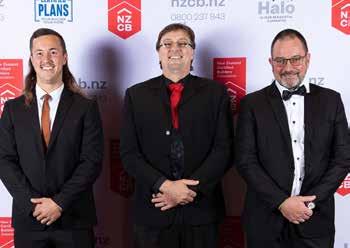

Second place was awarded to Roy Devereux from Devereux Builders Limited in Dunedin. Roy, whose brother competed in the 2015 Apprentice Challenge, admitted to just wanting to place higher than his brother… congratulations Roy, you certainly did! Roy receives a $7,000 prize package from Milwaukee Tool New Zealand. Third place was awarded to Courtney Willan from Edgecity Builders Limited in Auckland. Courtney impressed the judges with her dedication to trade and passion for the building industry. Courtney receives a $5,000 prize package from Winstone Wallboards.
The Chairperson’s Personality Award was presented to Hohua Aramoana from HRC Construction in Rotorua. Hohua quietly went about his business while at the national final, displaying a level of professionalism whilst supporting his fellow competitors, making the most of the opportunities of NZCB’s annual Conference and Expo. Hohua receives a $3,000 prize package from Paslode New Zealand.
The 2024 event saw returning and named sponsor ITM, whose long-term commitment to the NZCB Apprentice Challenge is gratefully acknowledged and welcomed. Thanks, ITM for your support and sponsorship at both the regional heats and the national final. Additional returning sponsors included Milwaukee Tool New Zealand, Winstone Wallboards, Paslode New Zealand, Sika NZ Limited and ToolWare – all of whom contributed to rewarding the 20 national finalists with products and merchandise. Thank you all for your support!
Proceeds from sales of this year’s project produced as part of the regional heats, and entry donations for non-NZCB aligned apprentice competitors were donated to the NZCB Apprentice Trust. In total, $8,015.00 was raised to support the Trust and was presented to Trust Chairperson Brian Dillon.
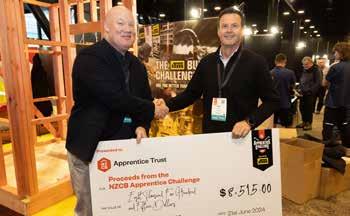
The overall calibre of apprentices competing in the annual Apprentice Challenge event continues to rise! This year’s national final saw five returning apprentices from the 2023 event, each of whom lifted their game from previous efforts, attempting to win the title. However, their fellow competitors were next-level, with the quality of apprentices competing being a testament to the prestige of the NZCB Apprentice Challenge, which continues to attract and identify New Zealand’s top building apprentices.
On behalf of NZCB, including National Support Office staff and sponsors, I congratulate each apprentice finalist competing in the 2024 NZCB Apprentice Challenge Sponsored by ITM competition. As always, it was my pleasure to host each of you at the national final alongside the annual NZCB AGM, Conference & Expo.
NZCB wishes you the very best for the remainder of your apprenticeships and beyond.
Nick Matthews
NZCB Industry Pathways and Apprenticeship Manager


Supporting young people coming into the building business has always been a big part of ITM’s core principles, and the calibre of this year’s winners of the NZCB Apprentice Challenge Sponsored by ITM, gives us great faith in the future of the industry.
Being a co-operative of locally-owned businesses, ITM stores engage with builders at a grass roots level. Every ITM store in New Zealand has a hand in helping local builders, and especially the apprentices coming through who are going to shape our industry going forward.
One hundred participants took part in the NZCB Apprentice Challenge regional events throughout the country, where their skills were assessed based on a wide range of criteria. All the competitors received an ITM gift pack, with the first three placegetters in each region winning ITM vouchers of $500 for first place, $300 for second and $200 for third.
This year’s regional challenge was to build a picnic table. Ironic considering the challenges of our industry in the last few years have been anything but a picnic, with covid lockdowns, material shortages, a string of devastating weather events and a tough economy.

I’d like to acknowledge all the NZCB people, judges, ITM store managers and staff for the behind the scenes work they put in to make the events such a great success.
And congratulations to the winners of the grand final – Daniel, Roy and Courtney. Your skills, professionalism and attitude were absolutely outstanding, and ITM are all incredibly proud of your achievements.
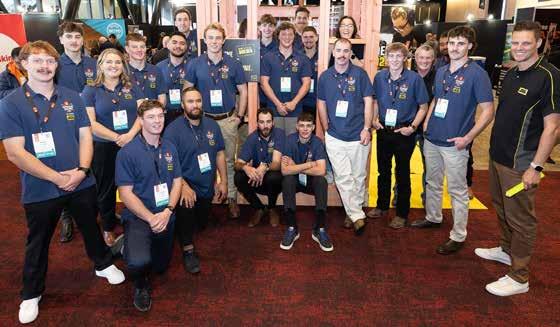
The tables were subsequently auctioned and the proceeds gifted to the NZCB Apprentice Network, which provides comprehensive support for apprentices including health and wellbeing assistance, plus mentoring to help with professional development and networking opportunities.


This was my first year entering the NZCB Apprentice Challenge Sponsored by ITM, so I had a good dose of nervous energy and anticipation leading up to the regional event in April.
We were tasked with building a picnic table, and received the plans a week out from the build day to do some calcs, form a cut list and build sequence. There’s nothing quite like building with a bunch of seasoned builders judging you mere metres away. There were some impressive tables, but fortunately my table won South of the Bridge! Thanks to Hillside ITM for hosting and the $500 ITM voucher – I’d booked my ticket to the national final!
The national final assessed the other skills necessary to be a well-rounded builder. The aim for me in the lead up was to nail my preparation. After submitting a polished CV, cover letter and work portfolio, I turned my efforts to the speech and studying for the trade exam. Public speaking hasn’t typically been my game, so I put a lot of effort into weaving a humorous tale and learning it well. I even presented it in a supremely awkward one-on-one setting to my project manager (a part time actor) for some pointers. I was ready for the national final…
We landed in Wellington and within hours were sitting silently in a room for the trade knowledge exam. Next up was the Mitre 10 Trade Great Apprentice Race. I was partnered with Courtney Willan, the Auckland North winner. This year we had to design and build a dog kennel to donate to the SPCA. With a mere 10 hours between the briefing and starting the build the next morning, it was up to us how much of that time we spent planning versus sleeping. Our team committed to a late, late night of planning.
The next morning, our thorough plan meant we were able to get straight into the build. To add to the excitement, all 20 apprentices had $2500+ of new tools to put to work to build it thanks to Mitre 10 Trade and Makita. The atmosphere was a lot less tense than the regional comp and it was fun to see everyone add their own creative flair to their kennels.
In amongst the Apprentice Challenge events we had the opportunity to explore the NZCB Expo stalls. There’s always lots to learn, experts to chat with and plenty of new products and building systems to see.
The final assessment was our presentations to the conference – the topic “What’s my Favourite Carpentry Tool and Why?”. Everyone stifled their nerves and delivered some cracker presentations with plenty of humour peppered in. Between us, we covered quite the range of tools – from a pencil to a telehandler, a tape measure to a ute. For mine, I spoke of my skillsaw relationship history – from my first time in the back yard with a Ryobi through to my current squeeze, the 36V 165mm Hikoki skilly. Roy’s speech on the irreplaceable multi-tool was a stand-out – I wish him the best in his quest for the elusive cheap, fast and high quality trifecta!

The weekend came to a climax at the Hollywood-themed Gala Dinner, sponsored by ITM. Just to compete at the national final we’d all won a regional event and put a lot of time and effort in –that called for a celebratory drink or three!
The first wave of good news came when our dog kennel won the Best Design Award – a Makita XGT 40V dropsaw each thanks to Mitre 10 Trade! Then an hour later, my name was announced for first overall – an incredible feeling – holding that giant $10,000 cheque thanks to ITM and, of course, hoisting the Ken Read Memorial Trophy!
I owe a massive thank you to NZCB for putting on a fantastic weekend. Flights, transfers, accommodation, meals, uniform –all covered! It was a blast meeting keen apprentices from all around the country, with some real characters in the bunch and lots of laughs shared. To us, the conference was a great insight into what NZCB is all about, and we’ve all become better builders just for being a part of the NZCB Apprentice Challenge Sponsored by ITM.
New Zealand’s brightest building talent on show again at the 2024 Great Apprentice Race – this time with a canine twist.
The NZCB Conference & Expo knows how to attract and showcase our best young building talent year in and year out –the recent Wellington event stood out for a different reason.
In late June, 20 of New Zealand’s most highly regarded apprentices took on the annual Mitre 10 Great Apprentice Race (GAR).

This year, their final project was not only designed to showcase their practical building skills but also ensuring the projects were sustainable and had a genuine purpose. The 10 teams were tasked with the designing and build of a dog kennel that would be donated to the local Wellington SPCA and provided to rehomed dogs and their new families across the region.
As per previous years, the teams of two were provided details of the build the night before the competition, this time though, it included a breed of dog, they should name and build a bespoke home for. With only a few hours for design and ordering extra materials; the race was on.
At the event, Mitre 10 stalwart, Stan Scott led the charge once again, and the participants didn’t disappoint. The energy and focus matched the skills on display, and before long, 10 spectacular dog houses were on display for the NZCB delegates to vote for their favourite design.
After a fun final race of dog toys, frisbee throwing, and final confirmation by the video referee, the race was all but through.
The top design is always a tough one to pick, but when the dust settled, the best design winners were Courtney Willan of Edgecity Builders Limited (Auckland) and Daniel Smith of Structured Builders Limited (Auckland).


And in close second, were the lads from the East Coast, Antonio Barbarich-Waikari of Awanui Construct Limited (Gisborne) and Archie Knight from Grant Linnell Building (Hastings).

Mitre 10 New Zealand is proud to partner with NZCB and sponsor the Great Apprentice Race, to encourage New Zealand’s youngest tradespeople as they enter their careers and progress to become future NZCB members. Each and every year we’re impressed by a new and equally passionate group of talented young building apprentices who are supported by NZCB members with true passion for our industry. We look forward to continuing our partnership now and into the future.

Rob Macgregor Mitre 10, Trade Marketing Manager


This is state of the art glass
ATS – Architectural Thermal Spacer® reduces the transfer of hot and cold temperatures
Argon gas creates an additional barrier to heat loss and improves insulation
Solux-E® and Solux Ultra™ are Low-E coatings that reduce heat loss in winter and over-heating in summer
Precision made, locally finished, high performance glazing technology designed to deliver the ultimate in thermal efficiency for New Zealand’s conditions. The AGP System® is backed with an extended 12-year warranty - two years longer than the industry standard or legislative requirements.
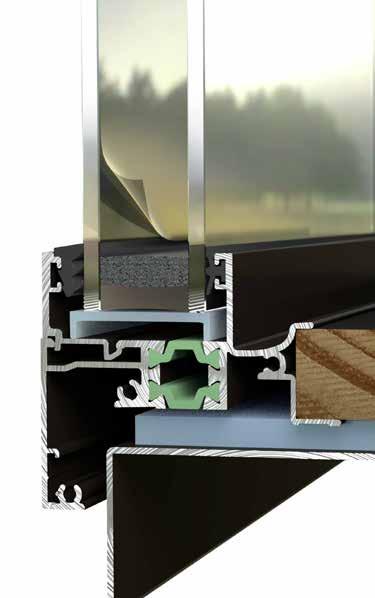
Wellington, Palmerston North, Whanganui, and New Plymouth
19–22 AUG
Grab your mates and join us for New Zealand’s largest travelling trade show for the construction industry. Find out what’s new, test and try tools, pick up giveaways and show specials, earn points, and go into the draw to win a ute!
Entry, food, and drinks are free!
For more information visit, www.conztruct.co.nz.
8:30am to 5:00pm | Christchurch
A fun educational inspirational day with expert commentary from owners, architects, builders, and suppliers. Hear about what makes a home healthy for people and the planet. Ask the owners about what it’s like to live in a superhome.
For more information visit, www.superhome.co.nz/events.
Tauranga Districts Men’s Mental Health Golf Day
Renner Park Golf Course, Tauranga
26 SEP
06 SEP SEP
SEP & OCT

Ready your golf clubs for a meaningful cause! With a focus on raising awareness and support for men’s mental health, which impacts many lives within and beyond our industry, we promise a day of fun, competition, and networking. Additionally, you will have the chance to win cool prizes while raising money for men’s mental health.
For more information contact Taryn at taurangadistricts@nzcb.nz.
Northland, Waikato, Bay of Plenty
This spring, the pro clima CUBE will tour the upper North Island, bringing practical airtightness and weathertightness training to the regions. Hands-on workshops to build better for comfort, energy efficiency, and durability.
See you in spring!
For more information visit, www.proclima.co.nz/events.
Christchurch, Hamilton, Palmerston North, Auckland
ITM is once again offering a full day of LBP Training to all Builders. Get the opportunity to receive 6 elective points in one day of interactive learning! Walk away with a whole lot of goodies and a certificate making it easy to log your learning activity.
Not only do you get help with your LBP Skills maintenance, but you also get a FREE lunch, smoko, coffee AND the chance to win some awesome spot prizes!
Register at www.itm.co.nz/for-the-trade/licensed-building-practitioners/lbp-training-days-2024.
Not sure if there are any events happening in your region? Check out the Events Calendar on the NZCB members-only Toolshed website www.nzcb.nz.

In the quest for sustainability, organisations often focus on elements such as environmental practices, corporate social responsibility, and financial stability. In previous articles in this series, we’ve also taken a look at some of the human factors: sustainable leadership, sustainable communication, and how to manage team stress.
Another important human factor around sustainability is effective coaching. This covers three different types of coaching: skills coaching, development coaching, and performance coaching. Each type of coaching offers distinct benefits that collectively enhance individual growth and therefore also organisational growth – creating a resilient and adaptable workforce.
Coaching for skills aims to enhance an individual’s proficiency in specific tasks or abilities related to their job. This type of coaching is particularly beneficial for addressing immediate performance gaps and elevating the competence of employees in their current roles.
The coaching process should be tailored to the individual’s needs, with clear objectives, actionable feedback, and regular practice opportunities. It’s essential for coaches to provide constructive criticism and positive reinforcement to help the individual improve their skills progressively. A skilled workforce is better equipped to innovate and adapt; these are essential traits for organisational sustainability.
Each type of coaching offers distinct benefits that collectively enhance individual growth and therefore also organisational growth – creating a resilient and adaptable workforce.
Coaching for development takes a broader perspective, focusing on nurturing an individual’s overall growth and potential, both within and beyond their current role. This type of coaching fosters a culture of continuous improvement and personal development, which is vital for long-term organisational sustainability.
It involves more profound self-reflection, identifying strengths, areas of growth, and personal aspirations. Coaches in this context often use open-ended questions to encourage self-awareness and personal insight.
Performance coaching: achieving measurable results
Performance coaching is highly results-oriented, focusing on improving an individual’s effectiveness in their current job. This type of coaching is closely linked to Key Performance Indicators (KPIs) and organisational targets, aiming to enhance immediate performance and productivity. Coaches work closely with the individual to set clear performance targets, monitor progress, and provide guidance and support to overcome challenges.
Performance coaching drives tangible improvements in job performance, contributing directly to an organisation’s success. When employees consistently achieve their performance goals, it leads to higher productivity, better resource utilisation, and ultimately, a more sustainable business.
Integrating coaching approaches for a sustainable future
An effective coaching program integrates skills, development, and performance coaching, as they complement each other and contribute to the holistic development of individuals within the organisation. Understanding the unique purpose of each coaching type enables coaches to tailor their approach and deliver meaningful support to individuals.
By doing so, organisations can create a resilient workforce capable of adapting to changing conditions and sustaining long-term success.
Need help?
Contact us (09 215 3378) for a free consultation to see how we can help with coaching your team.
Jason Dinan, Principal and Founder, Executive Coaching & Consultation. With 30 years of leadership experience, Jason helps grow organisations by developing high-performance leaders, teams and strategy. He was the project head for a leading homebuilder in New Zealand, Australia and North America, helping grow annual sales from 47% to 311%.

Leadership is a skill, and while some of us may be more “natural” leaders than others, it is a skill we can all learn.
An organisation can suffer considerable damage if their managers are poor leaders. Communication issues, conflict, lack of motivation, bad attitudes, loss of moral and a toxic team culture, are all a sure-fire way to drive productivity into the ground and potentially lose your valuable team members, reputation, not to mention valuable customers.
The role of a manager is to monitor a group or group of individuals to achieve a specified objective. However, leaders need to have the skills to influence, motivate, and enable others to contribute to the organisation’s success. They also need to embody traits like integrity, empathy, resilience, decisiveness and building trust. Leaders not only set direction but also foster collaboration and empower team members. In essence, leadership is not
Step One – Individual evaluation:
Rate each manager on a scale of 1-5 based on how frequently they exhibit the following leadership behaviours:
1. Vision and Direction –Clarity on organisational vision and project goals.
1 = Consistently clear
2 = Mostly clear
3 = Sometimes clear
4 = Rarely clear
5 = Never clear
2. Decision-making –Making informed decisions with critical thinking.
1 = Consistently good decisions
2 = Mostly good decisions
3 = Sometimes good decisions
4 = Often hasty or uninformed decisions
5 = Consistently hasty or uninformed decisions
so much about fulfilling the job description, and meeting KPIs –it’s about the human connection.
Typically, management teams in the trade industry consist of individuals who have been promoted due to their experience and skills on the tools. The value of this is that they have a good understanding of the roles and requirements of their direct reports. On the downside, they are not usually provided with any skills-based training on how to be a good leader.
Effective leadership is crucial in any industry to drive productivity, maintain morale, and uphold organisational reputation.
Here’s how you can evaluate your managers’ leadership skills and analyse areas for improvement:
3. Consistency –Consistent behaviour, engagement and expectation of the team.
1 = Always consistent
2 = Mostly consistent
3 = Sometimes consistent
4 = Often inconsistent
5 = Highly inconsistent
4. Communication –Clear, effective communication with instructions and feedback.
1 = Always clear
2 = Mostly clear
3 = Sometimes clear
4 = Often unclear or vague
5 = Always unclear or vague
5. Macro-management –Trusting team members and allowing autonomy.
1 = Rarely micromanages
2 = Occasionally micromanages
3 = Sometimes micromanages
4 = Often micromanages
5 = Always micromanages
6. Delegation –Delegating tasks effectively and empowering team members.
1 = Delegates well
2 = Usually delegates
3 = Sometimes delegates
4 = Rarely delegates
5 = Never delegates
7. Empathy –Demonstrating empathy and understanding towards the team.
1 = Highly empathetic
2 = Mostly empathetic
3 = Sometimes empathetic
4 = Rarely empathetic
5 = Lacks empathy consistently
8. Positive Mindset –Maintaining a positive outlook and fostering positivity.
1 = Consistently positive
2 = Mostly positive
3 = Sometimes positive
4 = Often negative
5 = Consistently negative
Step Two – Analysis and action:
1. Identify Gaps: Review the scores. Hopefully you have lots of 1s and 2s. But if there are more 3s, 4s and 5s, you may want to go to the next step.
2. Areas for Training: Look at which areas are scoring 3, 4 or 5 and whether they are consistent across the team, or different for different managers.
3. Customised Solutions: Engage in leadership training programmes to support and train these key people in your business.
4. Continuous Improvement: Implement regular leadership follow up, feedback and assessment sessions to track progress and ensure ongoing development.

Leadership in managers goes beyond technical skills; it requires emotional intelligence and effective communication to inspire and guide teams towards success.
By assessing and improving leadership qualities within your management team, you can enhance team performance, foster a positive work culture, and achieve organisational goals more effectively.
Have you identified areas where your managers/supervisors could benefit from upskilling? Then we would love to hear from you to discuss tailored solutions for your specific needs; email hello@humanex.co.nz or call 0800 408 136.
Wendy Taylor, Head of Customer Experience at HumanEx. Wendy has 20 years’ experience working in both community and professional services. From heading Operations in a Business Coaching Company, to Managing NFP organisations, teams and volunteers, her experience has taught her plenty about people, processes, and purpose. www.humanex.co.nz



Working with HumanEx has been an incredible experience for our team. Their Leadership courses, 1:1 coaching, and change management support has been instrumental in assisting our drive forward. They have a remarkable ability to bring people together on the same page, ensuring everyone is aligned and focused on our shared goals. The insights and skills we've gained through their programs have not only enhanced our leadership capabilities but also fostered a more cohesive team.
We couldn't be more satisfied with the results and highly recommend HumanEx to any organisation looking to elevate their leadership and team dynamics.
Brent Whibley -
CEO, Patchell

Over the past 18 months, consents for multi-dwelling residential projects have grown to the point where there are more multi-dwelling consents each month than for single-dwelling builds. Coupled with the current economic climate and the security that comes from Council, Kāinga Ora, or Government work, we are seeing more and more of our residential builders starting to work beyond the traditional single dwelling project.
As the demand for New Zealand’s building supply continues to rise, multi-dwelling housing is considered an attractive option to meet the changing housing needs. According to BRANZ, demand for more compact homes is increasing, particularly in areas with rapid population growth, while Stats NZ data shows there were 41% more multi-dwelling consents issued in 2023 than standalone builds.
The key difference between single and multi-dwelling housing is the increased complexity in managing the project and the added layers of responsibility, such as directors and development owners acting as PCBUs above the building contractor.
This complexity of communication around safety means that the projects are often not solely run by a group home builder or single builder and their subcontractors. Instead, for example, they can be run by project management companies, overseeing large stages of the project process that is then run and managed by specialists.
Then there are often complex stages of these projects, which are generally run by specialised subcontractors e.g. planning (engineers, architects, quantity surveyors), and project stages (civil works, construction management, carpentry/joiners, concreting).
Health and Safety (H&S) is more complex in multi-dwelling projects, requiring thorough pre-planning and on-site monitoring. Factors include the site’s size, extra machinery, traffic management, environmental issues, multiple contractors, a larger workforce, height and lifting equipment (such as cranes), and tight deadlines.
This complexity means more information needs to be included in the Site Specific Safety Plan (SSSP) during pre-planning. The SSSP outlines specific safety measures and procedures for the unique hazards of the site. Working with our expert H&S Advisors ensures that you, your contractors, and your client receive key safety information before work starts and get ongoing H&S support throughout the project.
The extra complexities that often need further planning and control when it comes to multi-dwelling projects:
Pre-planning of the project, because there are many moving parts, schedules, and sensitive timelines.
Detailing key parties, subcontractors, and their contact details. Creating multiple responsibilities, e.g. engineers, main contractors of key stages, multiple teams of trades.
Outlining those shared responsibilities, and the expectations around how safety is to be managed e.g. who is in charge of what, how this information is to be gathered and passed on, and to whom. Who is in control of managing risks and when?
Detailing the hazards and risks that are likely to be faced, and what controls are to be used to reduce or eliminate those.
Plans for emergencies (e.g. high-risk, fire, hazardous spill) and the site’s response throughout the project.
Any specific requirements that a government client might request.
More complex site boundaries e.g. multiple entries, houses that are sold whilst construction continues in other parts, site boundaries in close proximity to pedestrians etc.
Traffic management needs, e.g. more trade parking, higher traffic flow of machinery or materials, cranes and concrete pump trucks, council requirements.
Environmental requirements from increased construction waste that is produced on-site.
This list is not exhaustive but all of these complexities often go beyond those faced by a single-dwelling project and need the right planning, controlling, and communication to ensure the H&S of workers and others are managed well.
HazardCo can help you out. The HazardCo Project Pro option meets the H&S requirements of multi-dwelling projects, so you can feel confident that HazardCo can support you as your business grows.
If you are a builder starting to diversify, now’s the right time to review your H&S activity. Give us a call on 0800 555 339 to discuss your requirements and download your free multi-dwelling residential H&S checklist via the QR code.

The HazardCo Team. HazardCo are your trusted safety partner, providing you with the tools and support you need to #SortYourSafety. They also operate the NZCB Health and Safety helpline for members and can be contacted on 0800 555 339

MiTek® Posi-Struts™ unique open web design makes them the ideal solution for your joist or truss needs, with a range of advantages.
STRENGTH AND STABILITY
LIGHTWEIGHT CONSTRUCTION
FAST INSTALLATION
VERSATILITY AND CUSTOMISATION
EASY ACCESS TO SERVICES

Check out more of these innovations from PlaceMakers and MiTek®.

Chat with your local PlaceMakers branch to discover whether MiTek ® Posi-Struts™ can help take your build to the next level.

In the past few years there has been increased awareness of stress and burnout in the construction industry and its relationship to health, safety, and wellbeing in the workplace.
At Site Safe, we are not just about ensuring physical safety in the construction industry – we are committed to emotional and mental wellbeing in the workplace too. We have demonstrated this with research initiatives with Massey University and partnerships with Hato Hone, who deliver our Mental Health First Aid in Construction course, and the wellbeing social enterprise, Ignite Aotearoa.
When we researched stress in the construction industry with Massey University in 2021, we found that construction is a high-risk industry for work-related stress. More recent studies confirm this remains a concern for the industry.
Work-related stress is known to be one of the root causes of unsafe behaviours in construction as well as other problems like high absenteeism, alcoholism, drug abuse and even suicide.
Meaningful discussions on mental health are crucial for teams under pressure. A Toolbox Talk is an effective way to share mental health information, raise awareness, and encourage supportive conversations among staff.
Some topics to focus on for discussion include:
Mental health tips to use on-site;
What to do if you’re stressed or feeling anxious or worried;
Steps to destress;
How to start a conversation about mental health;
Self-care;
The dimensions of wellbeing;
Case studies on managing mental health and wellbeing.
Encourage everyone to join in and provide their own feedback, knowledge, and experiences. Use simple language for everyone to understand to convey the key mental health and safety messages.
Site Safe has material to guide you through relevant and beneficial mental health and safety discussions on our website, including case studies, trusted and relevant mental health resources, and other useful information.
Site Safe members can also access one of New Zealand’s most comprehensive online mental health and wellbeing platforms through Ignite Aotearoa. On the platform you’ll find a curated and clinically validated library of mental health and wellbeing content. These resources can be shared with and used by your team to help support their mental health and overall wellbeing.

Toolbox meetings are an opportunity to provide positive feedback for safe actions, hard work, and initiatives. It’s also important to avoid criticism and acknowledge everyone for their contributions. The meeting shouldn’t be a lecture, but a chance for engagement with the team.
Ensure that running and attending toolbox safety meetings is recognised as an important part of a person’s role. If the worker regards health and safety as an add-on, it will often be neglected.
Details of meetings should be recorded and kept on file. Record meeting dates, attendees, and discussion items. Show follow-up items from previous hazards, accidents, and incidents.
The Site Safe Site-Specific Safety Plan (SSSP) includes a ‘Site briefing/toolbox meeting minutes’ template, that’s free to download. This template includes all the things you need to cover off in a Toolbox meeting.
Following up after a meeting is key part of the dialogue. After your discussion, consider whether there are any improvements you can make, and make sure you communicate your mental wellbeing systems to current and new workers.
For material to guide you through relevant and beneficial mental health and safety discussions visit, www.sitesafe.org.nz.

As members of New Zealand Certified Builders (NZCB), you may have accessed EAP counselling services, but did you know EAP Services has broadened its range by offering a new set of services to provide broader well-being support?
While counselling remains vital to keeping you mentally safe at work, the new health coaching services, including fitness coaching, sleep support, nutrition, heart health, and a quit-smoking or vaping programme, are designed to consider all factors that impact employee wellness.
Our health coaching services are not just about providing advice; they empower you and your teams to achieve their well-being goals. From gym training to nutrition guidance and our sleep well programme, we offer a holistic approach to employee wellness.
Our dietitians provide nutrition guidance on maintaining a balanced diet, essential for maintaining energy levels and general body wellness.
Our cardiac health support focuses on engaging exercise programmes, nutrition plans, and stress management options. Our personal fitness coaching is not a one-size-fits-all approach. It is designed around individual needs and aspirations, with rehab coaches assisting with custom workout plans based on lifestyle and fitness goals.


Additionally, we must recognise the importance of getting good sleep. Our Sleep and Fatigue programme provides ways to improve sleep quality, helping to deliver more improved sleeping habits. Lastly, our quit smoking and vaping programme offers relevant resources together with continuous support so that employees can cease these habits, thus promoting good health.
We aim to provide comprehensive health coaching programmes that support the whole person’s wellness, ensuring they remain healthy, happy, and effective.
Proactively looking after you and your team’s health helps ensure a happier, healthier workplace.



These support sessions are provided virtually and are covered under your NZCB membership. Book by scanning the QR code or heading to www.book.habit.health/eap, choose “NZCB” as your employer and then your preferred time.

Being a builder or a tradie can be a tough gig at times. Everyone has days when nothing seems to go right and difficult things happen that make us feel unhappy and stressed.
It might be something someone said, or something that has gone wrong on site.
We can use a mental fitness skill called ‘reframing’ to help us feel less negative and get better outcomes. Here’s how it works:
1. Rather than just see the negative in a situation, think about anything you could learn from it so things can go better in the future.
2. Ask yourself whether there are other less negative explanations for what has happened. For example, if someone was rude to you, were they just having a bad day? Or did you get overly defensive?
3. Get some perspective – take a deep breath, step back and ask yourself ‘how important is this setback really in the overall scheme of things?’
4. Try and find positive people to be around who will help you see any upsides and affirm your good qualities. Try to avoid people who are blamers and complainers.
To use ‘reframing’ effectively when you are in the heat of the moment, you could start by doing some deep breathing to help you calm down and focus.
Be your best self
“I love the dayto-day challenge of building. Every day’s different. My best advice about keeping well is to have something to look forward to. If you’re working day-to-day and you’ve got all these stresses, you need things to look forward to. It could be as simple as going out with your mates for a beer. If you’re working non-stop and building all this stress and pressure and you don’t have anything to release it or look forward to, life just becomes monotonous. You need to give yourself something to look forward to at the end of each day, at the end of the week, at the end of the month. Mentally, that’s awesome.”


Here’s what Live Well Build Well wellbeing expert Prof. Grant Schofield (pictured above) has to say.
“Negative thoughts and feelings are part of a normal human experience of the world. You can’t avoid them, but by learning to be more psychologically flexible you can manage them. This means you’re going to notice and accept these feelings, but you’re not going to become them.”
“One of the challenges people face at work is that they are sometimes easily ‘triggered’. Something goes wrong and they act on their negative feelings straight away and lose their rag. Being mentally fit is about learning to notice those thoughts and let them go.”
“If you’re a tradie on site, it’s inevitable that people are going to do and say stupid stuff or something will go wrong and annoy you. What do you do with those feelings? Do you yell back at the guy who’s annoyed you? Or bottle it up until it’s all you can think about? Psychologically flexible people will notice that they’re angry or upset and then they’ll move on.”
“Flexible thinking is about having the skills to notice negative thoughts, accept them and let them go by. That’s how you keep moving towards your best life.”
To find out more, visit www.livewellbuildwell.com and follow Live Well Build Well on socials.
–
Andrew Johnston, builder. Waihanga
Ora Live Well Build Well. Our goal is to increase mental and physical wellbeing across the residential construction sector. We are a community where tradies lead the conversation of what wellbeing means to them and share their own personal stories on how they overcame tough times to inspire and educate their peers. www.live-well-build-well.com
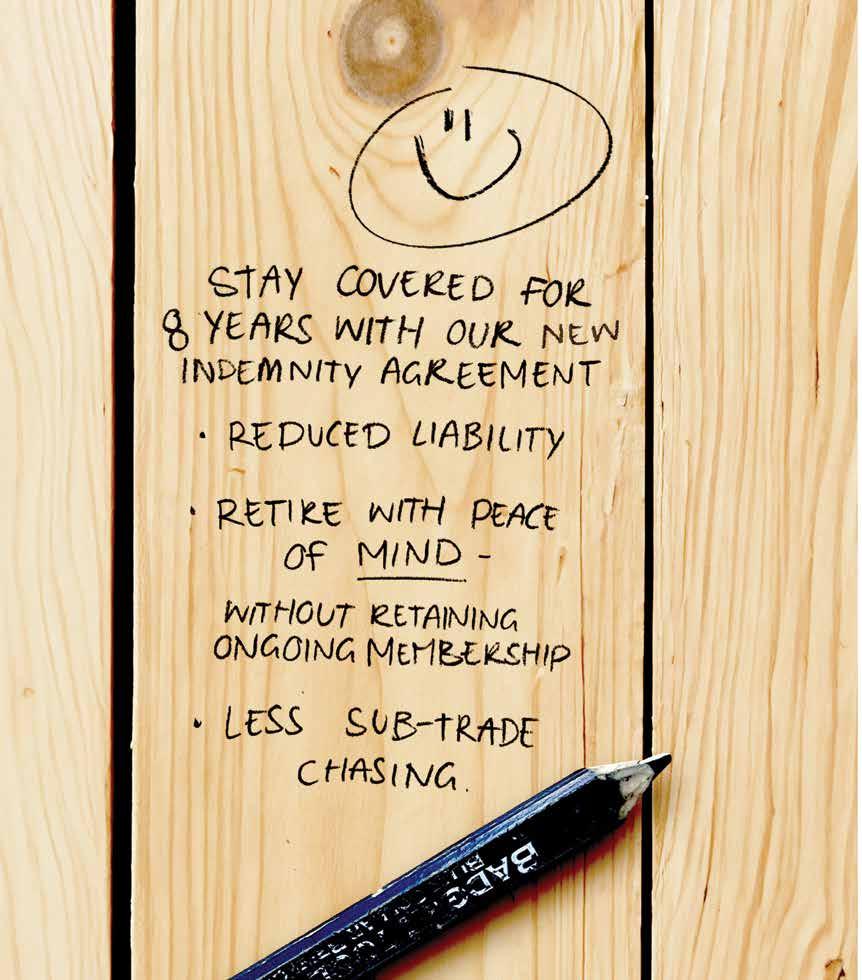
New Zealand Certified Builders (NZCB) is excited to partner with Makita NZ to provide a comprehensive range of cordless carpentry tools, exclusive to apprentices and employers aligned with the NZCB Apprentice Network.
By logging into the Toolshed on the NZCB website, Business and Trainee Members can get special pricing on the latest range of both 18V LXT and 40V XGT Kits and Bare skin tools. All purchases are shipped to the registered address of the NZCB Business Member and are freight-free unless the order is under $300 in value.
For more information contact Kirsty Armstrong at kirsty@nzcb.nz or online at www.nzcb.nz/members/shop/productcategory/apprentice-kits.
Exclusive to Business Members of NZCB, the NZCB Apprentice Network provides resources and support to you as an employer of apprentices and is FREE!
Sign up your apprentices online in the Toolshed. Visit: www.nzcb.nz/ members/trainee-membership/.
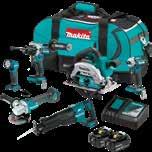
Shaun Begovich from Begovich Builders in the Waikato is the lucky winner of a First Year Apprentice Kit!

Delegates at the NZCB AGM, Conference & Expo were invited to register their apprentices, putting themselves in a draw to win the Apprentice Kit valued at $1400 retail pricing.
Central North Island Territory Manager, Brad Mitchell visited Begovich Builders on-site and provided some morning smoko for the crew, presenting the Apprentice Kit to Shaun and his NINE apprentices he’s enrolled into the NZCB Apprentice Network. Congratulations Shaun and thanks for supporting NZCB and your apprentices!
The NZCB Apprentice Network has now reached a new milestone, signing up more than 200 Trainee Members, with apprentice Jack Graham–Williams of Court Construction Limited in Auckland being Trainee Member #204.
The NZCB Apprentice Trust has raised almost $12,000 through an online charity auction, to support NZCB Trainee Member apprentices.
The auction ran for the two weeks before the NZCB AGM, Conference and Expo, closing at 10:00 pm on the Saturday evening at the NZCB Conference Gala Awards Dinner.
Thanks go to the NZCB supporters and sponsors who donated items and services for the auction. At a time when our industry is experiencing a downturn, it was great to see suppliers giving willingly to support the next generation of carpenters and builders. Special thanks to ITM, Mitre 10 Trade, Winstone Wallboards, Halo Guarantees Limited, Noel Leeming Commercial, FreeUp, Your QS, and APL Window Solutions.

In addition to the online auction, the NZCB Apprentice Trust raised a further $8000 from the proceeds from sales of the project (a classic Kiwi BBQ table) produced for the regional heats of this year’s NZCB Apprentice Challenge Sponsored by ITM, and from entry donations for non-NZCB aligned apprentice competitors. This is a fantastic result and will be put to great use, supporting our apprentices.
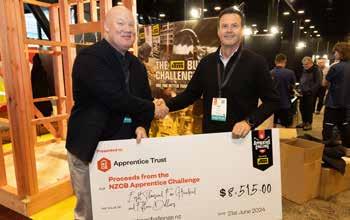


The Building and Construction Industry Training Organisation (BCITO) has launched a new ‘Hire Boldly’ campaign aimed at employers in the building and construction trades, to help boost the number of women entering the industry.

The number of women in BCITO apprenticeships has grown from less than one percent in 2015, however women still only make up just over six percent of apprentices. BCITO’s goal is to raise this figure to 10 percent by December 2025, through focusing on addressing ongoing misperceptions about women’s ability to take on physical jobs.
Reaching this goal will clearly signal the industry is moving forward and considering people based on skills and ability for the role, not gender. In the painting industry, where 24 percent of BCITO apprentices are female, it is no longer unusual to see a woman at the business end of a spray gun, brush or roller.
“Despite the recent slowdown in resource consents and the pipeline of work for New Zealand’s building industry, it’s vital to ensure we have healthy numbers of new people entering the construction industry and building skills for the future. Encouraging more women into the workforce is not only a matter of equality but a strategic move to strengthen our industry’s resilience. Employers play a critical role in shaping the future of construction,” says Greg Durkin, Director at BCITO.
In a 2021 report for the Women in Trades Collective, part of industry initiative Trade Careers, almost half of respondents to the employer survey (48 percent) agreed that hiring and supporting women tradespeople was a challenge because it would be hard to accommodate pregnant women in the workplace. Forty-six percent also said they would find it difficult to hire women because the workplace can be physically challenging.
Women looking for work cited receiving questions from potential employers such as “you realise there is dirt involved in this job?”, or the outright statement “we’re looking for a male”.
“When we have examples such as the BuildHERS project in Whenuapai, a four-bedroom home project-managed and built entirely by a female crew, they demonstrate how outdated or
misinformed these perceptions are. Women can do anything their male colleagues can do, and that’s what we hope to educate more employers about, to help the whole sector reach a goal of 30 percent female representation by 2040,” Durkin says.
Employing more women in construction brings numerous benefits. By encouraging more women to join the workforce, employers can tap into a broader talent pool. A diverse workforce also brings varied perspectives, leading to innovative solutions and improved problemsolving. Women can offer new ideas and approaches that benefit the entire industry. Companies known for their commitment to diversity and inclusion often enjoy a better reputation, which can attract top talent and improve relationships with clients and partners.
Meanwhile, more inclusive workplaces also tend to have higher employee satisfaction and retention rates.
“The women and the men bounce off each other in ways that enhance the job. It’s been fabulous for us. In fact, we’ve become quite successful through it,” says Maria Williams, co-owner of family business Kevin Paul Painters and Decorators, which also employs daughter Lonae Paul as part of a diverse crew.
To accompany the campaign, BCITO has created videos telling the stories of fathers, uncles, grandfathers and brothers who have not just hired women in trades but have seen positive changes within their businesses. Many like Kevin and Maria also talk about why their trade is a good career for their female family members.
“We’re calling on all building and construction employers to watch and share these videos, and actively participate in fostering a more inclusive trades industry by considering female apprenticeships,” Durkin says.
For more information, visit www.buildingwomen.nz.

• Review hiring practices: Ensure that job advertisements and recruitment processes are inclusive and free from gender bias. Consider implementing blind recruitment practices to focus on skills and experience.
• Create supportive work environments: Develop policies and practices that support worklife balance and provide a safe and respectful workplace for all employees. Consider flexible working arrangements and mentorship programmes.
• Promote training and development: Encourage and support female employees to pursue training and career development opportunities. This not only benefits the individual but also strengthens the overall skill set of the workforce.
• Lead by example: Senior leaders and managers should actively promote diversity and inclusion within their teams. This includes addressing any unconscious biases and championing the benefits of a diverse workforce.
Despite best intentions, sometimes you or your team may end up leaving a dirty mark on a wall during a project.
Here’s how to remove these marks successfully:
1. Dip a soft, lint-free cloth into the Resene Interior Paintwork Cleaner solution. Do not saturate the cloth as this could lead to runs and streaking. If using a spray pack, apply Resene Interior Paintwork Cleaner directly to the surface you wish to clean.
2. Using light strokes, thoroughly wipe the area to be cleaned, turning the cloth frequently to maintain a clean edge. Wipe away any excess solution. Wring the cleaning cloth out into an empty bucket before dipping it into the detergent solution again. This will minimise the appearance of streaks.
3. In order to achieve an even finish, dry the surface with one final wipe using a soft, dry, lint-free cloth in the direction of the paint flow.
If trying to remove a localised mark, start from a radius wide of the mark and work towards it. This will minimise any ‘tide mark’ that might develop.
Be aware that walls, like windows, can accumulate a faint layer of dust or grime. Cleaning a seemingly minor spot can lead to a major cleaning job! A feather duster can sometimes minimise the boundary between the cleaned and uncleaned areas.
Always test the cleaning method in an inconspicuous area to ensure you won’t damage the paint finish. Wait until the test area has dried before using the same technique on more conspicuous areas. Walls may appear discoloured as they absorb the water but should dry back to their original colour.
Do not vigorously scrub the surface or use an abrasive or strong cleaning agent, as you may burnish the surface and mar the paint finish. Remember to avoid washing walls for four weeks after painting, as waterborne paints require this period of time to fully cure.
For more useful tips, please visit www.resene.co.nz.

In construction and renovation, ensuring the durability and longevity of structures exposed to moisture is paramount. GIB Aqualine® and GIB Toughline® Aqua are great options for maintaining the integrity of wet area constructions.
GIB Aqualine® and GIB Toughline® Aqua are water resistant linings that prevent moisture penetrating through the lining and also resist water wicking up the core. The image (right) of a two-hour soak test illustrates the difference in wicking between Standard Plasterboard and GIB Aqualine® or GIB Toughline® Aqua.

Use GIB Aqualine® or GIB Toughline® Aqua for watersplash areas with an impervious finish, or within wet areas where it is finished with an impervious wall lining such as tiles, integrally waterproof sheet lining, or decorative high-pressure laminate. This will ensure the overall wall construction maintains its integrity longer when exposed frequently to moisture and during one-off events such as leaks or flooding.
A few things to note when using GIB Aqualine® or GIB Toughline® Aqua for bathrooms, kitchens, and laundries:
• You can’t tile over the plasterboard lining when installed over a GIB Rail® or STWC Acoustic Clip (ST001).
• Fastener centres need to be a maximum of 150mm to perimeter of wall and all intermediate studs when walls are tiled.
• When plasterboard lining is installed horizontally, a row of nogs is required behind the horizontal joint in showers or showers over bath layouts.

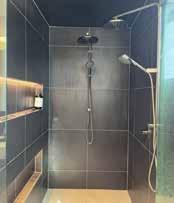
“GIB Aqualine® is my favourite drywall product. I’ve seen what can grow on (and in) other products. Yet GIB Aqualine® has the ability to withstand humid environments and stay in mint condition. Part of my job is performing ongoing maintenance on the houses we’re lucky enough to work on. As part of that maintenance, I sometimes see the damage water can do if it’s not properly contained. GIB Aqualine® gives me confidence that if a leak were to occur, the GIB Aqualine® could sustain the damage by not unnecessarily absorbing moisture and continue to do its job.” –Reade Wilson, Club GIB® Installer, and Maintenance Supervisor for drywall contractors Cochrane and Associates.

• Tiled internal corners of showers and showers over bath should have a minimum 32 x 32 x 0.55mm galvanised metal angle installed over the framing from floor to at least 1.8m high. This angle is not a flashing but is there to strengthen the corner and ensure the waterproof membrane does not crack.
• Maximum allowed tile weights are set out in the table (right). An allowance for tile adhesive and grout has been made in the calculation.
If you have any questions call the GIB® Helpline 0800 100 442.
Richard Fuller, Technical Support and Training Manager, Winstone Wallboards Winstone Wallboards are Strategic Partners of NZCB and New Zealand’s only manufacturer and largest marketer of gypsum plasterboard, drywall systems, associated products and services. For more information, visit www.gib.co.nz or call 0800 100 442




In today’s fast paced building sector, where time is money and homes are going up faster than ever before, winter construction can be challenging. High moisture levels in your timber framing will be a problem when it comes to passing your pre-line building inspection, risking project delays and cost overruns.
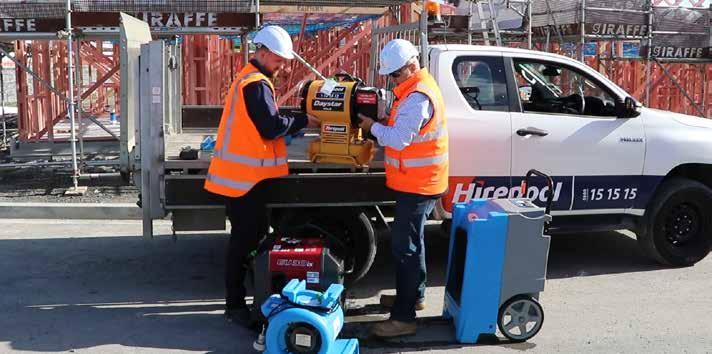
You can avoid these problems though by using a commercial dehumidifier in conjunction with a heater and fan.
You may think that you only need one of these options to reduce moisture in timber framing. While it might eventually do the job, you need to use all three in combination to get the most effective outcome in the shortest amount of time.
So what’s the science behind using a dehumidifier, fan and heater combo? Dehumidifiers work best when the air is warm, which is why you need a heat source. But you need to use a radiant heater rather than a direct fire because direct fire heaters put moisture back into the air, making them counter-productive. Also, because radiant heaters heat surfaces like framing more effectively and are not affected by wind.
While heaters do a great job of warming the air to help the dehumidifying process, without a fan to move the air around, heat will naturally rise, limiting the area you are trying to dry. So by adding a fan to the mix, the warm air can circulate easily around your timber framing, getting into the tight spots to remove stagnant pockets of humidity and provide maximum efficiency and moisture reduction.
Dehumidifiers, fans and heaters are easily transportable and easily manoeuvrable around on site to shift to different rooms and through door frames.
The numbers don’t lie!
McCore Group Site Engineer and Supervisor, Geng Chen is a big advocate of the dehumidifier, fan and heater combination and how effective it can be to reduce moisture levels.
“After 4-5 days drying with a fan, dehumidifier and heater trio from Hirepool, our timber moisture content dropped from 40% to 8%, well below the required 18% meaning we successfully passed our pre-line inspection.”
Safety Tip – Keep any heat source 2 metres away from the object you are drying
So if you need to reduce moisture on your next project to pass your pre-line inspection, head down to your local Hirepool branch and grab yourself a dehumidifier, fan and heater combo or visit www.hirepool.co.nz.
Hirepool is a NZCB National Partner (Starter) and New Zealand’s largest nationwide hire company with over 80 branches across the country. Hirepool is a proud New Zealand company that has been in business for 69 years, servicing both the Trade and DIY market. www.hirepool.co.nz

Construction is one of New Zealand’s highest-risk industries. For those looking for a way to communicate and manage health and safety on big sites or small, SiteSmart makes managing health and safety simple.
SiteSmart is an app, by Site Safe NZ, designed to manage health and safety on the go, from a smartphone, tablet, or laptop.
“With SiteSmart, we’re embracing the potential of technology to improve New Zealand’s health and safety system to make health and safety management simple,” explains Brett Murray, Chief Executive of Site Safe NZ.
“SiteSmart is user-friendly and helps to effectively manage and communicate risks, engage workers, and, most importantly, improve site safety rather than just ticking a box.”
The key to this is making sure that smaller operators have tools and products that are accessible and scalable.
From managing policies and registers to site inductions and hazard awareness for contractors and staff, SiteSmart is the place to store and share health and safety information.
For large sites, an interactive hazard map is a tool that lets you identify, locate, and notify workers and contractors of hazards directly through the app.
“We believe that the size of your business shouldn’t restrict access to emerging technologies that make health and safety management seamless. SiteSmart has been developed with small businesses in mind,” adds Brett.
To learn more about how SiteSmart can benefit your business, visit www.about.sitesmartapp.com.
Site Safe New Zealand. Site Safe is a not-for-profit membership organisation established by industry for industry and is New Zealand’s leading health and safety solutions provider. www.sitesafe.org.nz.


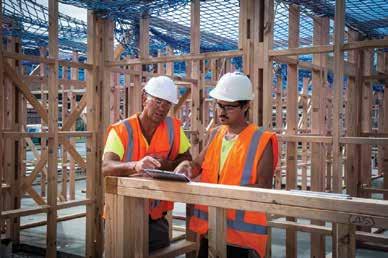


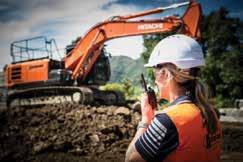

Builders often take a “she’ll be right” approach and proceed with variations without written client approval. Unfortunately, this can lead to problems when clients dispute the changes.
Variations should be a positive for any business as this allows extra profit to be made from the project. But you need to keep track of what’s been discussed, costed, and approved, which is where Rave comes in.
Rave is a building project management tool, which helps you keep track of a building project over time, and makes it easier to keep track of variations as they are proposed and accepted or declined.
Many clients make the mistake of adding up all the VOs at the end of the job and then invoicing, which is not recommended. To ensure you meet your legal obligations and protect yourself, you should quote the VO and generate a quote for the client to approve or decline.
Rave makes it easy to generate a variation proposal, and request quotes from each supplier/contractor needed for that VO. This proposal is emailed directly to the client for approval. Once the client approves or declines, the action is time stamped in Rave, showing who accepted or declined the VO proposal and any accompanying messages.
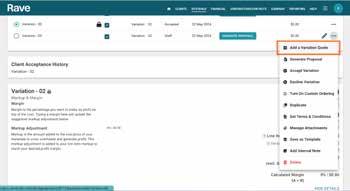
Whether you’re using a staged payment schedule or invoicing by ‘charge-up’/cost plus, it’s essential to invoice for approved variations in a timely manner. Most of Rave’s clients will create a settlement statement and variation invoice as soon as the VO has been accepted or along with the next scheduled payment.
Pro Tip: Many builders charge higher margins for VOs due to the extra admin time not accounted for in the job, but this must be stipulated in your contract.
You can track and invoice variations through the progress payment sub-tab or create a client invoice for charge-up via the ‘Bills In’ sub-tab.
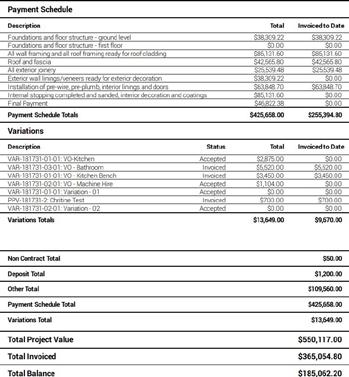
Tracking project variations can be done in several ways.
One option is to use the Back Costing report, where many Rave clients create a separate variation category to track VOs individually. You can also use the Charge Up report and Cost Centre report for detailed tracking.
Additionally, the Progress Payment sub-tab displays variations in their own table for easy cost management, showing paid, unpaid and pending invoices.
Rave caters to everyone from group home builders to solo operators – with sales, project, and financial management solutions. For more information or to book a demo you can call 07 210 2228 or email sales@ravebuild.co.nz.




While the basics of any building or renovation project may be the same from one year to the next, our expectations of our homes modify over time, affected by changing lifestyles, availability of new products, new ways of building and new technologies.
One of the biggest drivers is sustainability, which goes beyond good intentions for the planet to products and designs that make our homes more efficient and therefore less costly to run.
Issues top of mind are efficient heating, power generation alternatives, comfort, water conservation and rainwater harvesting. Homes will incorporate solar panels, passive home features, better insulation, energy-efficient window joinery placed correctly for passive solar gain and cross-ventilation, tankless water heaters, rainwater tanks, EV chargers and drought-resistant gardens.
The rise in the popularity of tiny homes has given us food for thought as to whether we want something small or large, and also shows how prefabricated and modular homes can be assembled quickly on site, reducing construction time and minimising delays due to factors like bad weather. This needn’t involve a whole house but can be components like preformed wall panels, trusses and even bathroom “pods”.
Smart technology enables us to “drive” our homes remotely, switching on heating and lights, operating appliances and checking security cameras from afar. This is not only convenient but helps achieve energy efficiency as systems can be optimised for minimal waste – for example, underfloor heating on timers or operated remotely.
Smart technology isn’t limited to what you may decide to include in your house but extends to new building project management software and more accurate construction estimates and budgets. Builders and architects can collaborate remotely in real time to solve unforeseen problems on site. And at the design stage, homeowners can more easily visualise their house designs due to more sophisticated renderings of house plans, including 3-D versions and virtual reality walk-throughs of new designs.
While Kiwis are known to shift houses fairly regularly compared to other nationalities, homes are being designed to cater for changes in life stage, and are being future-proofed so we can “age in place”.
Multipurpose rooms that morph from living to study to bedroom can be included. For ageing, elements like fewer stairs, level-entry outdoor access, easy-to-reach hot points, walk-in showers, lift shafts
and a ground-floor en suited guest room that can be used as a main bedroom as mobility reduces, can be included.
Multigenerational homes will become more of a feature as urban homes become less affordable and available, and in instances where older parents share the family home or adult children delay moving out. With smaller urban sites, using a whole-site approach where limited outdoor spaces or strips of land around the house are designed as one so, for example, a window can look out to a piece of sculpture or water feature rather than just a fence and a few shrubs.
And for the future? AI and robotics are set to play a transformative role in the building industry, used for project planning and more efficient construction. A brick-laying robot anyone?
The builder
Malcolm Fleming of the New Zealand Certified Builders Association advises on how to achieve a smoother process:
When engaging any builder, do your due diligence – check if they belong to a trade association and are trade qualified. In recent years, with builders in high demand, homeowners would have been happy if their builder was simply breathing and standing vertical but now that demand has dropped, homeowners can be more selective.
Building is something homeowners don’t do often so it can be very daunting. Get referrals and use searchable member databases on trade association websites. Ask builders to explain how they charge, their hourly rates and the margins they charge on materials. Use a contract.
Be clear about what you want to achieve and what your budget is. Get costs checked at various stages, by a quantity surveyor or a builder as part of their contract if they are engaged early, but especially before you spend money on finished designs – you could end up with designs for a home you can’t afford. There is still a lot of variability with material costs, and it is expensive to build in New Zealand. The Government has responded by requiring local councils to recognise building product standards from trusted overseas jurisdictions.
The biggest challenge these days is affordability which is leading homeowners to reconsider exactly how much space they need. With good design, a house can be smaller with less wasted space, and cost significantly less.
Stuff.co.nz online 24 June 2024
NZ House & Garden magazine July 2024
SHARON NEWEY
Communication is important. Have regular catch-ups with the builder on site and document everything that is agreed. If you are a couple, nominate one of you as the main point of contact to avoid conflicting information.
If decisions need to be made during the build, get on to those quickly to avoid costly hold ups or mistakes.
Renovations have a higher likelihood of surprises – you may find rotten piles when you take up the flooring, or old framing when you remove the wall lining – so you need a higher budget contingency.
Be realistic about whether you can live in the house while it’s being renovated.
Sustainability is becoming important. Consider using eco-friendly materials that can be recycled at the end of their lifetime, and reduce wastage on site by using standard sizes.
The designer
Darren O’Neil of O’Neil Architecture notes the changing face of house design:
In general, homes are evolving to be smarter, greener and more versatile. While open-plan layouts remain popular, we aim to delineate distinct zones within these spaces. Varying ceiling heights, sliding glass walls and strategic furniture placement are effective techniques for achieving this sense of separation and functionality. Over the years there has been a shift away from separate formal living areas, with the addition of a snug or den which tends to be smaller and cosier.
Covid has changed the expectations around how and where we work so dedicated home offices are more important than ever. Almost all homes that we design will have either a home office, study nook or a guest bedroom that can transition to a work-from-home area when required.
The main bedroom suite is becoming more of a sanctuary – if you have the space and budget, made the wardrobe as big as you can. You will never regret more storage space.
We’ve seen a move towards clients wanting their bathrooms or en suites to be a space to relax and unwind – a spa-like retreat where indulgence meets practicality. There’s a notable resurgence in the demand for at-home saunas or steam rooms.
A commonly requested feature is expansive walk-in pantries or prep rooms, ideal for tidying up clutter during social gatherings. Also, a larger-than-average garage, for more parking space and ample storage for bikes, sports equipment and children’s toys.
Technology and sustainability have significantly influenced the design of houses. It’s important to design with integration and infrastructure in mind, so you can upgrade or support future technological advancements.
Kitchen designer Annika Rowson of Rowson Kitchens looks at what today’s kitchens might include:
Homeowners are entertaining at home more often so are keen on bars and wine fridges. The work-from-home trend has meant more built-in coffee machines, and hydro taps are popular for the delivery of boiling and sparkling water.
New combination ovens with steam, air frying and microwave functions minimise the need for some small appliances. Column refrigerators and freezers give increased capacity, temperature zone flexibility and include technology to keep food fresher for longer. Multiple lidded bins cater for recycling and food waste systems.
The construction sector is feeling the pinch with declining business confidence and new home consents. NZ IEA’s latest business survey found net 65% of the building sector firms surveyed expect a worsening in the general economic outlook. It comes as new home consents are down by almost a quarter on the preceding year ending May. Certified Builders Association chief executive Malcolm Fleming says it’s clearly affecting some construction businesses.
Group home builders, who are primarily in the Building New Homes market are finding it very difficult.
The Government promises “granny flats” of 60 square metres or less will be easier to build after planning changes that will force councils to permit small dwellings on rural and residential zones without resource consent.
Making it easier to build granny flats was part of NZ First’s coalition agreement with National. NZ First leader Winston Peters, taking over as Acting Prime Minister while Christopher Luxon is in Japan, used Monday’s post-Cabinet press conference to announce consultation on changes that would fulfil that policy promise.
“Making it easier to build granny flats will make it more affordable for families to live the way that suits them best,” Peters said.
“Over a quarter of households that do not own their home spend more than 40 per cent of their income on housing. High housing costs have a greater impact on Māori, Pasifika, and people with disabilities, as well as seniors – so unlocking the space in the backyards of family members opens the door to new ways of living.
“We know granny flats are a great option for seniors, but they’re also increasingly popular with other families such as those who want homes where their university-age children can live at home but maintain some privacy and independence, or families who want to provide extra support to a loved one,” he said.
Feedback’s being sought on the proposed change.
Certified Builders Chief Executive Malcolm Fleming told Mike Hosking that it’s good that proposed designs are required to meet the building code.
But he says there’s no checking to ensure designs and constructions adhere to the building code, which isn’t such a good thing.
opportunity for them to get exposure to all brands and all sponsors.
I’m here at the Takina Convention Centre, which has been transformed into an amazing workshop for the Great Apprentice Race. Now this is the pre challenge to the final tonight where the 20 top carpentry apprentices will be battling it out for the top spot. And they’ve been challenged this morning with creating a kennel. They’ve each been given a dog, a stuffed animal and a stuffed toy. And basically they have to create an amazing kennel. And this will be donated to the SPCA. And I’m joined by organiser Nick Matthews. Lovely to meet you, mate. Now tell us a little bit about what’s in store for today.
Oh, it’s a really fun event.
Um, we like to keep it light. We’ve got some fantastic sponsors, so they’ll, they have to design and build a dog kennel. As he said, it goes to the SPCA. Uh, and then later on this afternoon there’s a fun event. We don’t like to let on too much about what’s happening. Um, but there will be dog related activities using maybe a dog Frisbee and a ball thrower and what have you. And, um, it’s really light hearted, and it’s just a nice way to start the afternoon festivities as part of the overall event. And you’ve got some very talented people here What did they sort of have to go through to get to the final today? Yeah, sure. So they’re actually competing in the New Zealand Certified Builders Apprentice Challenge, which is sponsored by ITM. Um, and so at a regional level, back in April, 20 of them competed, uh, and the successful winners come through to the final. Uh and as I’ve said might attend sponsor this event. So it’s um, it’s a unique
Um, but at a, regional level, what we’re looking for is their trade skills. And when they come through to the national final, we’re looking for to see who can be the next member of NZCB and who’s a professional building practitioner Fantastic, mate. Well, I just want to make sure that we go chat to the only female finalist who’s in this amazing race today. So we’re going to head over and chat to Courtney, who’s hard at work. She’s putting her kennel together, I believe for driver, which is a border collie. Lovely to meet you, Courtney Fantastic. Now tell me a little bit about the dog that you’ve been given today, and I guess you have to name them as well.
Yes. So, um, our dog is called driver, um, because he is a border collie and he, um, you know, drives sheep and drive is also a tool. So it seemed like it worked in well with competition and you’re the only female finalist.
How great does that feel? And what would your message be to women who are possibly wanting to make a career change?
Yeah, absolutely. Um, I’m really proud to be representing my gender. Of course. Um, I’d love to have more women in this space. So if you’re keen or if you’re even interested, like an inkling, go ahead and ask the people around you, uh, you know, neighbour down the road or, um, dad’s friend and give it a go. That’s how I started. And, um. Yeah, I love it when you no turn back.
Fantastic. Well, best of luck and best of luck to everyone here. I know everyone who’s watching will be cheering all the contestants on today. The finals will be tonight, so they’re all going to be battling it out for that top spot. It’s going to be awesome.
Building hands-on approach has been ideal for Jayden, 18
DENISE PIPER
Whangārei’s top building apprentice says taking up a trade is a great option for people like him who struggled at school due to a learning disorder.
Jayden Hudson-Owen, 18, said he is proud of how far he has come, representing Whangārei in the national Certified Builders Apprentice Challenge.
The former Whangārei Boys’ High School student said his dyslexia and ADHD meant that he didn’t really like school.
However, in Year 12 he enrolled in a Gateway programme through school, which gave him an introduction to the trades one day a week.
Having loved building before he could even walk, Jayden excelled, applying his practical skills to an everyday problem. He was quickly offered a BCITO apprenticeship and a job with HC Builders in 2022.
“I like doing something different every day – being outside and doing something with my hands,” he said.
This year, he was encouraged to test his skills in the Builders Apprentice Challenge by his BCITO training adviser John Gwilliam and current employer at C J Building Services, Craig Pollard.
Jayden said the day before the Whangārei competition in April, he almost talked himself out of entering, but his boss managed to calm his nerves and encourage him to give it a go.
Competitors were given eight hours to build a picnic table from a set of plans provided the week before and Jayden had to wrestle with twisted timber to take the title.
He said the win still hadn’t sunk in.
“When they announced that I had won, I couldn’t believe it. I was shaking and my family were in tears; it was an unreal feeling.
“I’m stoked to be able to say that I’m the top apprentice in Whangārei.”
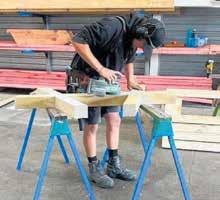
Alongside Bay of Islands winner Keiran Davis, Jayden represented Northland at the national competition in Wellington on June 21 and 22.
The event required them to deliver a CV, project portfolio, a two-hour build, an interview, speech and exam – which Jayden said was much more challenging for him than the practical test in Whangārei.
“I would rather be doing something with my hands that the written stuff... but mostly I’m just proud of myself for how far I’ve come already.”
He encourages other building apprentices to give the competition a go, saying it is a great opportunity.
Jayden also encourages students to consider a trade apprenticeship – such as being an electrician, plumber or builder – if they find school is not for them.
“Being a builder is something different every day and it puts your brain to work.”
MIRIAM BELL
It never occurred to Courtney Willan that she could be a builder when she was growing up, but now she is one of the country’s top apprentices – and the industry needs more women to follow in her path.
Willan was always creative and enjoyed making things, but she headed to the University of Canterbury after school and did a BA in English and history, with a view to teaching.
But that career did not feel like the right fit for her, so she and her partner decided to try a selection of different activities to see if they could find a better option.
One activity was a six week woodwork night class, and she loved it. It prompted her to do a one year pre-trade course in carpentry at Unitec, and from there she signed up for an apprenticeship.
She has never doubted that choice, although she worked at a couple of different building companies before finding a home at Edgecity Builders in Auckland.
“Each company gave me opportunities to learn, which I’m grateful for, and each of them had their own niche in the industry. That’s exposed me to different types of building, and has made me a better builder.”
Now 28 and in the third year of her apprenticeship, her skills helped her win the North Auckland title in the regional heats of this year’s New Zealand Certified Builders Apprentice Challenge, and she is competing in the final this weekend.

workplaces were welcoming to women.
to taking on women as apprentices, he said.
As one of a small, but growing number of women builders, she is proud to be showing people that building is a great career option for women.
Willan said when she was younger she did not see any women builders and it did not occur to her that building was something she could do for a profession.
“But now I’m passionate about encouraging women who are interested to get into the industry, and about seeing the 3% female frontline figure grow. It would be nice to have a bit more of the sisterhood on sites.”
It would also be good for the wider industry as the building trade has been stuck in its ways and hesitant to change, she says.
“Bringing different types of people from a range of backgrounds into the industry introduces new skills and ways of thinking, and creates a different sort of culture. It leads to positive change.”
There is a consensus among sector leaders that the construction industry as a whole needs that sort of change and innovation to better attract and retain new workers.
That is because the industry still has a shortage of skilled workers, and boosting labour force participation among women, who traditionally do not go into construction, is considered one solution.
It was a recurring theme at this week’s Offsite NZ CoLab conference in Auckland.
Keynote speaker Vaughan Buckley, from Volumetric Building Companies in the United States, described the level of female participation in building as unacceptable on all fronts.
Buckley said if building companies wanted to staff their labour force properly they had to look beyond the traditional labour pool as it was limited, and they had to ensure their
Fletcher Building general manager offsite manufacturing Bruce Chave said more women were needed in the construction industry and particularly on the frontline.
“We have pushed to have women leaders get to the 30% mark, and we have got there. But on the frontline participation is much lower. For us, it is about 9.5% and that’s above the industry norm.”
According to the Ministry for Business, Innovation and Employment’s 2022 report on Building and Construction Sector Trends women make up only 15% of the industry’s workforce.
But, again, estimates of the number of women “on the tools” were much lower at 3% to 5%.
The numbers of women going into the industry have increased, with the MBIE report showing that between 2012 and 2022 the number of female workers rose by 93.7%.
Building and Construction Industry Training Organisation statistics also showed an increase in the number of women training in a trade.
It said that in 2015 fewer than 1% of building and construction apprentices were women, while now nearly 7% of carpentry, painting and decorating, and timber joinery apprentices are female.
But New Zealand Certified Builders noted that isolating a figure for one trade, such as carpentry, was challenging, so the 7% incorporated trades such as painting and joinery.
New Zealand Certified Builders industry pathways and apprenticeship manager Nick Matthews said more women need to be encouraged and supported to go into building.
They were under-represented in the industry, but a generational change was happening, and there was greater openness
“That’s important because we need to keep training people, even in the downturn, because if we don’t the next time there is a boom the industry will have an even bigger skill shortage.
“We need builders to replace those retiring, but there is also a certain amount of attrition from the industry due to people going overseas on OEs, changing sectors, or starting but not finishing apprenticeships.”
There was no simple answer to the problem, but increasing the number of people attracted to the industry was one part of it, he said.
“To do that, we need to challenge perceptions and show different demographic groups that it is a good industry to be in, that it offers a good lifestyle and income, and that we have a strong commitment to boosting diversity.”
Another part of the solution was providing better support to the next generation of builders coming through to help them complete their apprenticeships, Matthews said.
“That is something that has been missing, and at New Zealand Certified Builders, we are actively addressing it with our new apprentice network.”
The network gives apprentices access to health and mental health services, wider professional development, mentoring, industry events and networking.
It also has training modules to support and inform employers looking to hire an increasingly diverse range of apprentices, including more women, he said.
“The new generation coming through needs to be treated differently to the ones of the past. We have moved on from the way people were treated when doing apprenticeships many years ago – and we should have as it is not the 1980s anymore.”
FRANCES CHIN
A former engineer took a big pay cut to pursue his dream of becoming a builder after growing tired of his white collar job.
And it paid off – Aucklander Daniel Smith, 32, was named the winner of this year’s NZ Certified Builders Apprentice Challenge. He was apprenticed with Structured Builders, having started working for them three years ago.
Before that, Smith had worked as a design engineer for seven years, he said. The 32-yearold swallowed a 50% pay cut when he started as a builder’s apprentice, although he has since regained his lost salary, he said.
Smith joked that many of his former engineer co-workers thought he was crazy when he told them his plan to work as an apprentice builder.
However, some also told him they envied him.
“A few other guys that were like, ‘that’s awesome, if you can make the numbers work’.”
Smith had always done well in school, he said. With a head for numbers, a degree in engineering seemed a natural choice, and the trades were not sold as an option for him back then.
He graduated with a first class honours degree in engineering, and went on to work as a design engineer.
Smith worked for a few different companies, designing ovens, construction equipment, aircraft interiors. It was sedentary work, doing 3D modelling and drawing designs from the comfort of an office.
While he was sitting at his desk, Smith said he started to miss the physical activity playing sports in high school had provided him.
After he and his wife purchased a home in the Auckland suburb of Onehunga, Smith started doing small renovations to the house.
It was a large scale landscaping project that put the building bug in his head, he said. A digger came to excavate their entire garden, taking away 30 truckloads of soil to level the garden and have retaining walls around the perimeter.
With a young daughter at the time the project was intense, and resulted in a desk, pergola, and
Smith said he started finding himself sitting at his desk at work, thinking about the building going on at home.
“I started to question maybe I should see if it’s as much fun if it’s someone else’s house.”
Working as a builder appealed to him because it was a job where he was still solving problems, but he got to use his body a bit more – a recipe for a “happy job”, he said.
Being a builder engages the mind and the body, Smith said. Now, when he returns home after work, he doesn’t feel the need to do a workout or hit the gym, he said.
His past life as an engineer had not been completely forgotten either. With his skills in maths, along with a problem solving mindset drilled into him at university, Smith said he was good at knowing how to approach problems and
putting forward ideas to fix them.
He hoped to one day own his own building company, but he still had a lot to learn, he said.
“I’m really happy with Structured Builders ... they’re giving me the right opportunities to develop and become a better builder.”
Smith said times had changed, and the myth of being an apprentice that had to do all the bad jobs and take stick from the builders was one that had long disappeared.
“I think there’s plenty of people that are in my situation, where they’re working a white collar job and feeling like it’s not really their thing.
“I definitely encourage people that are in a similar position to have a crack, because it’s, it’s awesome, fun, good industry.”
The awards took place in Wellington on June 2122. Smith won a $10,000 prize package from ITM.
JOHN LEWIS
ROY Devereux is not even a qualified builder but has already climbed further up the ladder than his boss.

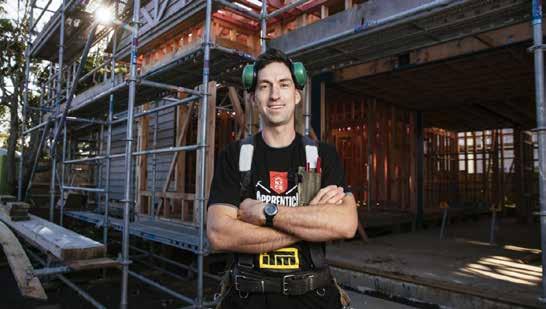
The 23-year-old apprentice builder was runner-up in the New Zealand Certified Builders Apprentice Challenge at the weekend.
It has given him bragging rights over his boss and brother Marcus, who came third in the
“I work for my brother Marcus, and I’ve gone
“It was definitely a goal when I entered the competition – I wanted to win, but if I couldn’t do that, I wanted to place second.”
Despite the one-up on his big brother, Roy said he was not playing that card.
“It’s not a bone of contention for us.
“He’s been very supportive and, working alongside him, he’s a very good builder and I’ve learnt so much from him.
“If I wasn’t working for him, I wouldn’t have got this far.”
Marcus was proud of his little brother’s achievement.
But in case Roy returned to work with a “big head” about his achievement, Marcus went into full “boss mode” and made a valiant attempt to keep Roy’s feet firmly grounded.
“I’ve come back to work today and I’m putting in Pink Batts insulation, so that’s brought me back down to earth and reminded me that I’m still an apprentice.
“No power tools for me today.”
He was now thinking very carefully about his next steps.
“I’ve got two options – either I get qualified as a builder, or I drag this apprenticeship out and have another go at the challenge again next year.
“I’m pretty close to being qualified, so I’ll go for qualification, I think.”
The challenge was won by Daniel Smith, 32, of Auckland, and third place was won by Courtney Willan, 28, of Auckland.
The challenge national final took place at the New Zealand Certified Builders (NZCB) annual conference in Wellington, where 20 regional finalists from across the country competed for the top prize.
Apprentices were judged on examples of their work, dedication towards their apprenticeship, and a presentation to hundreds of NZCB member builders attending the conference.
NZCB chief executive Malcolm Fleming said the talent in this year’s challenge was a great sign for the future of the construction industry.
“The apprentices that competed in this year’s NZCB Apprentice Challenge demonstrated enthusiasm for the carpentry trade and a high level of skill, which is incredibly promising for the future of the industry.
“In order to ensure that we continue to grow the number of qualified builders in New Zealand, and meet the demand facing our sector, it’s vital we support our apprentices and provide them with opportunities to put their skills to the test and thrive.”
New Zealand Certified Builders (NZCB) would like to thank the following companies, our Strategic Partners (corporate sponsors), who play a vital part in assisting to cover costs for our members personal development/training through NZCB regional seminars, NZCB Annual Conference and monthly live Zoom webinars. Their support also assists to cover expenses with our marketing and communications.
NZCB is proud to partner with the following companies, who are aligned with the Association to bring our members discounted services and products.









More information on these services and products can be found under the Member Benefits section, on the NZCB members-only Toolshed website, www.nzcb.nz/members/member-benefits/ or by contacting Kirsty at the NZCB National Support Office on 0800 237 843 or kirsty@nzcb.nz.
New Zealand Certified Builders (NZCB) is proud to partner with the following companies who align with our Association and give NZCB members access to a wealth of expertise and support throughout New Zealand.
COMPANY
National Partners (Premium)
WEBSITE
APL Window Solutions www.aplnz.co.nz
Comfortech Building Performance Solutions www.pinkbatts.co.nz
Enveloped Solutions Ltd www.enveloped.co.nz
MiTek New Zealand www.miteknz.co.nz
PlaceMakers www.placemakers.co.nz
Red Stag Timber www.redstag.co.nz
Resene Construction Systems www.reseneconstruction.co.nz
National Partners (Professional)
Milwaukee Tool New Zealand www.milwaukeetools.co.nz
Resene Paints Ltd www.resene.co.nz
Sika (NZ) Ltd www.nzl.sika.com
National Partners (Starter)
Abodo Wood Ltd www.abodo.co.nz
Altus NZ Ltd www.altus.co.nz
ASSA ABLOY Opening Solutions New Zealand www.assaabloy.co.nz
Bowers Brothers Concrete Ltd www.bowersbrothers.co.nz
Builda Price (2016) Ltd www.buildaprice.co.nz
Connected Spaces www.connectedspacesjoinery.co.nz
CS For Doors Ltd www.csfordoors.co.nz
CSR Building Products (NZ) Ltd www.csr.co.nz
ECKO Fastening Systems www.ecko.co.nz
FMI Building Innovation www.aslnz.co.nz
Franklin Plumbing and Builders Supplies Ltd www.franklins.co.nz
FreeUp www.freeup.co.nz
Futurewood www.futurewood.nz
GCH Aviation Ltd www.gchaviation.com
Glass Vice Products www.glassvice.com
Green Light Escrow www.greenlightescrow.co.nz
GTEE.co.nz www.gtee.co.nz
WEBSITE
Harvey Norman Commercial www.harveynormancommercial.co.nz
NEW Hirepool Limited www.hirepool.co.nz
HomePlus www.homeplus.co.nz
Independent Building Supplies www.ibs.co.nz
James Hardie New Zealand www.jameshardie.co.nz
JSC Premium Architectural & Building Solutions www.jsc.co.nz
Kingspan Thermakraft Ltd www.thermakraft.co.nz
KLC Ltd www.klc.co.nz
Kopine www.kopine.co.nz
Laminex New Zealand www.laminexnewzealand.co.nz
Marley New Zealand Ltd www.marley.co.nz
Marshall Innovations Ltd www.mwnz.com
Masada www.masada.co.nz
My Smart Office Ltd www.mysmartoffice.co.nz
Open2view www.open2view.co.nz
Pacific Steel (NZ) Ltd www.pacificsteel.co.nz
Paslode New Zealand www.paslode.co.nz
Pro Clima New Zealand Ltd www.proclima.co.nz
Productspec Ltd www.productspec.net
Proven Systems Ltd (DVS) www.dvs.co.nz
Rave Build Management www.ravebuild.co.nz
Red LBP Ltd www.redlbp.co.nz
Red QS Ltd www.redqs.nz
Rosenfeld Kidson & Co. Ltd www.rosenfeldkidson.co.nz
Schneider Electric www.pdl.co.nz
Simx Ltd www.simx.co.nz
Soudal Ltd www.soudal.co.nz
Superhome Movement www.superhome.co.nz
The Trades Coach www.tradescoach.co.nz
Tile Space www.tiles.co.nz
Unicom Security www.unicomsecurity.co.nz
Viking Roofspec www.vikingroofspec.co.nz
Warmup NZ Ltd www.warmup.co.nz
YourQS Ltd www.yourqs.co.nz









